Netflix Prize
description: competition from 2006-2009 to improve Netflix's personalization algorithm
71 results

Predictive Analytics: The Power to Predict Who Will Click, Buy, Lie, or Die
by
Eric Siegel
Published 19 Feb 2013
Michael Liedtke, “Netflix Recommendations Are About to Get Better, Say Execs,” Huffington Post Online, April 9, 2012. www.huffingtonpost.com/2012/04/09/netflix-recommendations_n_1413179.html. Netflix Prize team BellKor’s Pragmatic Chaos: “BellKor’s Pragmatic Chaos Is the Winner of the $1 Million Netflix Prize!!!!” September 17, 2009. www2.research.att.com/~volinsky/netflix/bpc.html. Regarding SpaceShipOne and the XPrize: XPrize Foundation, “Ansari X Prize,” XPrize Foundation, updated April 25, 2012. http://space.xprize.org/ansari-x-prize. Netflix Prize team PragmaticTheory: PragmaticTheory website. https://sites.google.com/site/pragmatictheory/. Netflix Prize team BigChaos: Istvan Pilaszy, “Lessons That We Learned from the Netflix Prize,” Predictive Analytics World Washington, DC, Conference, October 21, 2009, Washington, DC. www.predictiveanalyticsworld.com/dc/2009/agenda.php#day2–13.
…
Netflix Prize team BigChaos: Istvan Pilaszy, “Lessons That We Learned from the Netflix Prize,” Predictive Analytics World Washington, DC, Conference, October 21, 2009, Washington, DC. www.predictiveanalyticsworld.com/dc/2009/agenda.php#day2–13. Clive Thompson, “If You Liked This, You’re Sure to Love That,” New York Times, November 21, 2008. www.nytimes.com/2008/11/23/magazine/23Netflix-t.html. Netflix Prize team The Ensemble: Blog post by Aron, “Netflix Prize Conclusion,” The Ensemble, September 22, 2009. www.the-ensemble.com/content/netflix-prize-conclusion#comments. Recount of the dead heat completion of the Netflix Prize: Gregory Piatetsky-Shapiro, “Netflix Prize Contest Dramatic Finish—and the Winner Is. . .,” KDnuggets News, July 28, 2009. www.kdnuggets.com/news/2009/n14/1i.html. PragmaticTheory blog post, “By a Nose. . . or Is It a Hair. . . ” PragmaticTheory blog, July 28, 2009. http://pragmatictheory.blogspot.com/2009/07/by-nose-or-is-it-hair_28.html.
…
Overview of several uses of ensembles by Netflix Prize teams: Todd Holloway, “Ensemble Learning Better Predictions through Diversity,” ETech 2008, March 11, 2008. http://abeautifulwww.com/EnsembleLearningETech.pdf. Andreas Töscher from Netflix Prize team BigChaos: “Advanced Approaches for Recommender System and the Netflix Prize,” Predictive Analytics World San Francisco Conference, February 28, 2009, San Francisco, CA. www.predictiveanalyticsworld.com/sanfrancisco/2009/agenda.php#advancedapproaches. Netflix Prize leaderboard: Netflix Prize leaderboard results, September 21, 2009. www.netflixprize.com/leaderboard. Winning the Netflix Prize by a matter of 20 minutes: Steve Lohr, “A $1 Million Research Bargain for Netflix, and Maybe a Model for Others,” New York Times, September 1, 2009. www.nytimes.com/2009/09/22/technology/internet/22netflix.html.
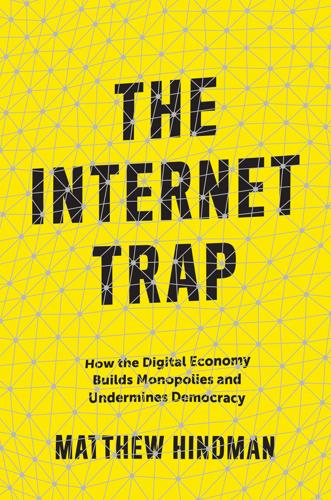
The Internet Trap: How the Digital Economy Builds Monopolies and Undermines Democracy
by
Matthew Hindman
Published 24 Sep 2018
Which sorts of firms, and which websites, are able to use them most effectively? The story of the Netflix Prize gives insight into all of these questions. Netflix and Content Recommendation In October of 2006, movie-rental service Netflix kicked off the Netflix Prize, a worldwide competition to improve its video recommendation algorithm. At the time Netflix rented dvds to subscribers by mail. A typical Netflix user signed up wanting to see a short list of movies, which she watched within a few months. Whether the subscriber stayed or left thus depended on her ability to find new movies to watch. Netflix offered a $1 million prize to the first team that could beat CineMatch, its in-house recommendation engine.
…
The Netflix contest provides a partial answer. Moreover, the Netflix Prize is likely the only chance we will have in the near future to look at the inner-workings of web recommendation systems using a large, public, real-world dataset. Netflix initially planned a successor contest to the Netflix Prize. However, facing a class-action lawsuit and an ftc investigation regarding user privacy, Netflix canceled the intended sequel.23 Given these legal complications, other large digital firms have been wary about sponsoring similar contests or releasing comparable datasets. The Netflix Prize is often discussed as an example of crowdsourced problem solving.
…
But there has been little exploration of the wholesale effects of these changes not only within news and media organizations, but also with regard to competition between them. This chapter takes a detailed look at the Netflix Prize—a contest with surprising lessons even for those who do not care about movies. As it turns out, the task of recommending the right movie is similar to recommending almost anything—predicting which songs users like, which ads they prefer, which news stories they engage with. The Netflix Prize was the first large open-submission machine learning contest, and it produced big improvements in the accuracy of recommender systems. This contest remains perhaps the best lens through which to see the general principles of how recommender systems function.
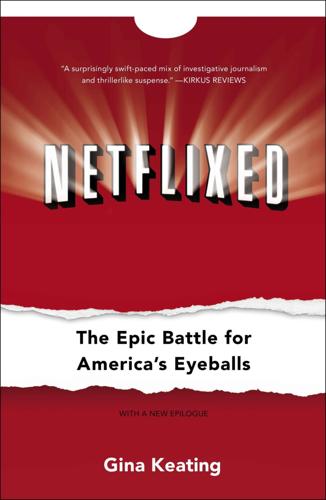
Netflixed: The Epic Battle for America's Eyeballs
by
Gina Keating
Published 10 Oct 2012
Craft Blockbuster Online, vice president of strategic planning Rick Ellis Blockbuster Online, operations consultant Shane Evangelist Blockbuster Online, senior vice president and general manager Gary Fernandes Board member Bill Fields Chairman/chief executive before Antioco Sarah Gustafson Blockbuster Online, senior director, customer analytics Jules Haimovitz Board member Lillian Hessel Blockbuster Online, vice president, customer marketing Jim Keyes Chairman/chief executive Karen Raskopf Corporate Communications, senior vice president, Nick Shepherd Chief operating officer Michael Siftar Blockbuster Online, director, applications development Nigel Travis President Strauss Zelnick Board member Larry Zine Chief financial officer COSTARS (ALPHABETICAL) Robert Bell AT&T Laboratory, Statistics Division, researcher Jeff Bezos Amazon.com founder/chief executive Martin Chabbert Netflix Prize winner, French-Canadian programmer Tom Dooley Viacom, senior vice president Roger Enrico PepsiCo, chairman John Fleming Walmart, chief executive Brett Icahn Carl Icahn’s son Carl Icahn Blockbuster investor/board member Michael Jahrer Netflix Prize winner, Big Chaos team, machine learning researcher Mike Kaltschnee HackingNetflix, founder/blogger Gregg Kaplan Redbox, chief executive Mel Karmazin Viacom, chief operating officer Yehuda Koren Netflix Prize winner, AT&T Laboratory, scientist Warren Lieberfarb Warner Home Video, president Joe Malugen Movie Gallery, chairman/chief executive Dave Novak Yum!
…
Craft Blockbuster Online, vice president of strategic planning Rick Ellis Blockbuster Online, operations consultant Shane Evangelist Blockbuster Online, senior vice president and general manager Gary Fernandes Board member Bill Fields Chairman/chief executive before Antioco Sarah Gustafson Blockbuster Online, senior director, customer analytics Jules Haimovitz Board member Lillian Hessel Blockbuster Online, vice president, customer marketing Jim Keyes Chairman/chief executive Karen Raskopf Corporate Communications, senior vice president, Nick Shepherd Chief operating officer Michael Siftar Blockbuster Online, director, applications development Nigel Travis President Strauss Zelnick Board member Larry Zine Chief financial officer COSTARS (ALPHABETICAL) Robert Bell AT&T Laboratory, Statistics Division, researcher Jeff Bezos Amazon.com founder/chief executive Martin Chabbert Netflix Prize winner, French-Canadian programmer Tom Dooley Viacom, senior vice president Roger Enrico PepsiCo, chairman John Fleming Walmart, chief executive Brett Icahn Carl Icahn’s son Carl Icahn Blockbuster investor/board member Michael Jahrer Netflix Prize winner, Big Chaos team, machine learning researcher Mike Kaltschnee HackingNetflix, founder/blogger Gregg Kaplan Redbox, chief executive Mel Karmazin Viacom, chief operating officer Yehuda Koren Netflix Prize winner, AT&T Laboratory, scientist Warren Lieberfarb Warner Home Video, president Joe Malugen Movie Gallery, chairman/chief executive Dave Novak Yum! Brands, chairman/chief executive Michael Pachter Wedbush Morgan, analyst Martin Piotte Netflix Prize winner, French-Canadian programmer Sumner Redstone Viacom, chairman Stuart Skorman Reel.com, founder/chief executive Andreas Toscher Netflix Prize winner, Big Chaos team, machine learning researcher Chris Volinsky Netflix Prize winner, AT&T Laboratory, Statistics Division, executive director Mark Wattles Hollywood Video, founder/ chief executive CONTENTS About the Author Title Page Copyright Dedication CAST OF CHARACTERS PROLOGUE CHAPTER ONE A SHOT IN THE DARK (1997–1998) CHAPTER TWO THE GOOD, THE BAD, AND THE UGLY (1998–1999) CHAPTER THREE THE GOLD RUSH (1999–2000) CHAPTER FOUR WAR OF THE WORLDS (2001–2003) CHAPTER FIVE THE PROFESSIONAL (2003–2004) CHAPTER SIX SOME LIKE IT HOT (2004–2005) CHAPTER SEVEN WALL STREET (2004–2005) CHAPTER EIGHT KICK ASS (2004–2005) CHAPTER NINE THE BEST YEARS OF OUR LIVES (2005–2006) CHAPTER TEN THE EMPIRE STRIKES BACK (2006–2007) CHAPTER ELEVEN THE INCREDIBLES (2006–2009) CHAPTER TWELVE HIGH NOON (2007–2008) CHAPTER THIRTEEN THE GREAT ESCAPE (2007–2009) CHAPTER FOURTEEN TRUE GRIT (2009–2010) CHAPTER FIFTEEN CINEMA PARADISO (2011) EPILOGUE AFTERWORD ACKNOWLEDGMENTS A NOTE ON SOURCES BIBLIOGRAPHY INDEX PROLOGUE IT IS EARLY MORNING ON a workday in the spring of 1997.
…
Volinsky also loved movies, and both he and Bell, who also found his vocation in baseball stats, were excited about the chance to experiment with Netflix’s huge trove of real-world data—a set of customer ratings that was a hundred times larger than any they had ever seen. Bell had entered and won contests before the Netflix Prize, but the $1 million and the open-door nature of the competition—anybody with a PC and an Internet connection could enter—gave the contest a special allure. It quickly became a leading topic of conversation in the research and academic communities that Bell traveled in, and he relished the chance to see how he stacked up against his peers. About fifteen people showed up for a brainstorming session Volinsky organized shortly after the Netflix Prize was announced, but active members dwindled after a couple of weeks to just three—Bell, Volinsky, and their younger Israeli colleague, Yehuda Koren.

What Algorithms Want: Imagination in the Age of Computing
by
Ed Finn
Published 10 Mar 2017
If Netflix has allowed us to glimpse the aesthetics of these modes of abstraction, a deeper look at algorithmic arbitrage will reveal the political economy of the algorithmic era and, ultimately, the nature of algorithmically inflected value. Notes 1. Willimon, House of Cards. 2. “Global Internet Phenomenon Report.” 3. Evers, “The Post: New ISP Performance Data For December.” 4. “The Netflix Prize Rules.” 5. Töscher, Jahrer, and Bell, “The BigChaos Solution to the Netflix Grand Prize.” 6. Hallinan and Striphas, “Recommended for You.” 7. Buley, “Netflix Settles Privacy Lawsuit, Cancels Prize Sequel.” 8. Strogatz, “The End of Insight.”; Arbesman, “Explain It to Me Again, Computer.” 9. Amatriain, “Netflix Recommendations.” 10. “Introducing Netflix Social.” 11. Amatriain, “Netflix Recommendations.” 12.
…
While less omnipresent than Google, the company’s influence on digital culture is still striking: on any given day in 2014, roughly a third of all Internet data downloaded during peak periods consisted of streaming files from Netflix.2 By the end of 2013, the company’s 40 million subscribers watched a billion hours of content each month.3 In 2006, Netflix announced a mathematical competition with a million dollar prize: improve the company’s recommendation algorithm by at least 10 percent. Modeled on other contests like DARPA grand challenges and the Loebner Prize (the annual Turing Test competition), the Netflix Prize invited outside researchers to teach them new algorithmic tricks that could improve the efficiency with which they recommended movies to their customers. It was an approach entirely in keeping with the company’s reputation as an early darling of the disruptors: a Silicon Valley firm that was successfully upending a staid economic model.
…
It was a mathematical approach to recommendations, one that ignored the complex position of Hollywood entertainment and movie rentals as culture machines. The Netflix Prize led to a heated competition between rival teams of computer scientists and statisticians gunning for the prestige and cash bounty of besting the Cinematch ratings. After three years, a combined team titled BellKor’s Pragmatic Chaos won the prize, inching out an equally effective algorithm (as measured by Netflix Prize rules) because they submitted their entry twenty minutes earlier. The winning algorithm combined hundreds of different approaches in an “ensemble” of predictors, blending a combination of randomly generated probes and observed features (for instance, weighting user ratings differently based on temporal features like weekday vs. weekend).5 The problem as Netflix framed it, and as the various contestants took it on, was almost purely mathematical.

Beautiful Visualization
by
Julie Steele
Published 20 Apr 2010
For the visualization in Figure 9-8, the first strategy was used because it illustrates the highly nonuniform distribution both of movies in general and of movies with large numbers of ratings (indicated by larger circles). However, for the enlargements of the visualization in the subsequent figures, the second strategy was used for improved readability. Figure 9-8. Visualization of the 17,700 movies in the Netflix Prize dataset Closer Looks Other than ratings, the only data in the Netflix Prize dataset is the titles and release dates for the movies. However, competitors in the Netflix Prize have found that latent attributes, such as the amount of violence in a movie or the gender of the user, are important predictors of preference. Not surprisingly, some of the clusters appear to be explainable by these attributes.
…
We’ll use this similarity measure to generate similarity data for all 17,700 movies in the Netflix Prize dataset, then generate coordinates based on that data. If we were interested in building an actual movie recommender system, we might do so simply by recommending the movies that were similar to those a user had rated highly. However, the goal here is just to gain insight into the dynamics of such a recommender system. Labeling The YELLOWPAGES.COM visualization was easier to label than this Netflix Prize visualization for a number of reasons, including fewer nodes and shorter labels, but mostly because the nodes were more uniformly distributed.
…
Senate Social Graph (1991–2009), by Andrew Odewahn, uses quantitative evidence to evaluate a qualitative story about voting coalitions in the United States Senate. Chapter 9, The Big Picture: Search and Discovery, by Todd Holloway, uses a proximity graphing technique to explore the dynamics of search and discovery as they apply to YELLOWPAGES.COM and the Netflix Prize. Chapter 10, Finding Beautiful Insights in the Chaos of Social Network Visualizations, by Adam Perer, empowers users to dig into chaotic social network visualizations with interactive techniques that integrate visualization and statistics. Chapter 11, Beautiful History: Visualizing Wikipedia, by Martin Wattenberg and Fernanda Viégas, takes readers through the process of exploring an unknown phenomenon through visualization, from initial sketches to published scientific papers.
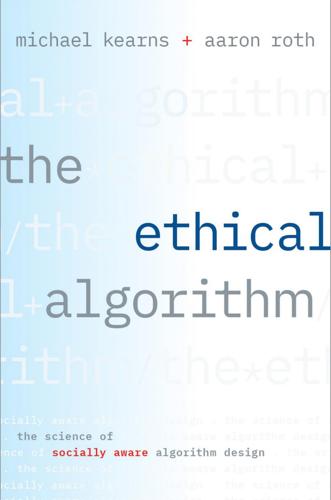
The Ethical Algorithm: The Science of Socially Aware Algorithm Design
by
Michael Kearns
and
Aaron Roth
Published 3 Oct 2019
In fact, Sweeney subsequently estimated from US Census data that 87 percent of the US population can be uniquely identified from this data triple. But now that we know this, can the problem of privacy be solved by simply concealing information about birthdate, sex, and zip code in future data releases? It turns out that lots of less obvious things can also identify you—like the movies you watch. In 2006, Netflix launched the Netflix Prize competition, a public data science competition to find the best “collaborative filtering” algorithm to power Netflix’s movie recommendation engine. A key feature of Netflix’s service is its ability to recommend to users movies that they might like, given how they have rated past movies. (This was especially important when Netflix was primarily a mail-order DVD rental service, rather than a streaming service—it was harder to quickly browse or sample movies.)
…
The goal of a collaborative filtering engine is to predict how a given user will rate a movie she hasn’t seen yet. The engine can then recommend to a user the movies that it predicts she will rate the highest. Netflix had a basic recommendation system based on collaborative filtering, but the company wanted a better one. The Netflix Prize competition offered $1 million for improving the accuracy of Netflix’s existing system by 10 percent. A 10 percent improvement is hard, so Netflix expected a multiyear competition. An improvement of 1 percent over the previous year’s state of the art qualified a competitor for an annual $50,000 progress prize, which would go to the best recommendation system submitted that year.
…
She was worried that her sexual orientation would become clear if people knew what movies she watched on Netflix. The lawsuit sought the maximum penalty allowed by the Video Privacy Protection Act: $2,500 for each of Netflix’s more than two million subscribers. Netflix settled this lawsuit for undisclosed financial terms, and cancelled a planned second Netflix Prize competition. The history of data anonymization is littered with many more such failures. The problem is that a surprisingly small number of apparently idiosyncratic facts about you—like when you watched a particular movie, or the last handful of items you purchased on Amazon—are enough to uniquely identify you among the billions of people in the world, or at least among those appearing in a large database.
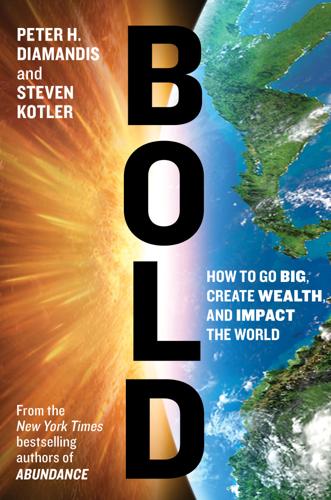
Bold: How to Go Big, Create Wealth and Impact the World
by
Peter H. Diamandis
and
Steven Kotler
Published 3 Feb 2015
” The lesson here is that in incentive competitions, results can come from the most unusual of places, from players you would never expect, and from technologies you might never suspect. Lee Stein, an XPRIZE benefactor, says, “When you are looking for a needle in the haystack, incentive competitions help the needle come to you.” Case Study 2: The Netflix Prize The best incentive prizes are those that solve important puzzles that people want solved and people want to solve—and there’s a difference. The Wendy Schmidt Oil Cleanup XCHALLENGE falls directly into the former category. It took me over ten years to raise the money for the Ansari XPRIZE, but Wendy Schmidt stepped forward to fund the Oil Cleanup Challenge in less than forty-eight hours.
…
Every time one of their recommendations was a clear miss—based on your interest in Breakfast at Tiffany’s we think you’ll enjoy Naked Lunch—customers got angry. And with new competitors sprouting up in the likes of Hulu, Amazon, and YouTube, this ire was getting expensive. So Netflix decided to attack the problem head-on, announcing the Netflix Prize in October 2006—a million-dollar purse for whoever could write an algorithm that improved their existing system by 10 percent.15 And this contest is a perfect example of what happens when you design prizes around intrinsic motivations. Competition, coding, and movies—what could be more fun than that?
…
Within ten months, there were over 20,000 teams from 150 different countries involved. By the time the contest was won, in 2009, that figure had doubled to 40,000 teams. But the results that Netflix saw extended far beyond the number of contestants entered in a contest. As Jordan Ellenberg explained in Wired: “Secrecy hasn’t been a big part of the Netflix competition. The prize hunters, even the leaders, are startlingly open about the methods they’re using, acting more like academics huddled over a knotty problem than entrepreneurs jostling for a $1 million payday. In December 2006, a competitor called ‘simonfunk’ posted a complete description of his algorithm—which at the time was tied for third place—giving everyone else the opportunity to piggyback on his progress.
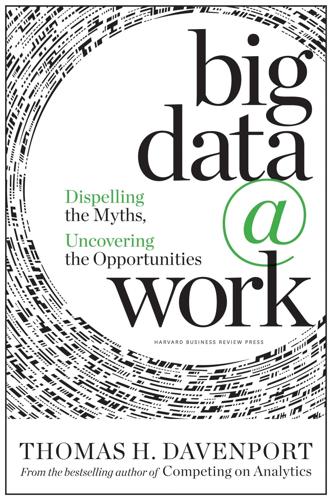
Big Data at Work: Dispelling the Myths, Uncovering the Opportunities
by
Thomas H. Davenport
Published 4 Feb 2014
GE is primarily focused on big data for improving services and is already using data science to optimize the service contracts and maintenance intervals for industrial products. Google, of course—the ultimate big data firm—uses data scientists to refine its core search and ad-serving algorithms. Zynga uses data scientists to target games and game-related products to customers. Netflix created the wellknown Netflix Prize for the data science team that could optimize the company’s movie recommendations for customers. The testing firm Kaplan uses its data scientists to begin advising customers on effective learning and test-preparation strategies. These companies’ big data efforts are directly focused on products, services, and customers.
…
Many big data enthusiasts argue that there is more value from adding new sources of data to a model than to refining the model itself. For example, Anand Rajaram, who works at @WalMartLabs and teaches at Stanford, ran a bit of a natural experiment in one of his Stanford classes along the lines of the Netflix Prize—the contest that invited anyone to try to improve the Netflix customer video preference algorithm and win a million bucks.16 One of the groups in Rajaram’s classes used the data that Netflix provided and applied very sophisticated algorithms to it. Another group supplemented the data (illegally, according to the rules of the competition) with movie genre data from the Internet Movie Database.
…
GE is mainly focused on big data for improving services—among other things, to optimize the service contracts and maintenance intervals for industrial products. The real estate site Zillow created the Zestimate home price estimate, as well as Chapter_03.indd 65 03/12/13 11:28 AM 66 big data @ work rental cost Zestimates and a national home value index. Netflix created the Netflix Prize for the data science team that could optimize the company’s movie recommendations for customers and, as I noted in chapter 2, is now using big data to help in the creation of proprietary content. The testing firm Kaplan uses its big data to begin advising customers on effective learning and test-preparation strategies.

The New Kingmakers
by
Stephen O'Grady
Published 14 Mar 2013
On October 2, 2006, Netflix announced the Netflix Prize: The first team of non-employees that could best their in-house algorithm by 10% would claim $1,000,000. This prize had two major implications. First, it implied that the benefits of an improved algorithm would exceed one million dollars for Netflix, presumably through customer acquisition and improvements in retention. Second, it implied that crowd-sourcing had the potential to deliver better results than the organization could produce on its own. In this latter assumption, Netflix was proven correct. On October 8—just six days after the prize was announced—an independent team bested the Netflix algorithm, albeit by substantially less than ten percent.
…
On October 8—just six days after the prize was announced—an independent team bested the Netflix algorithm, albeit by substantially less than ten percent. The 10% threshold was finally reached in 2009. In September of that year, Netflix announced that the team “BellKor’s Pragmatic Chaos”—composed of researchers from AT&T Labs, Pragmatic Theory, and Yahoo!—had won the Netflix Prize, taking home a million dollars for their efforts. A year earlier, meanwhile, Netflix had enabled the recruitment of millions of other developers by providing official APIs. In September 2008, Netflix launched developer.netflix.com, where developers could independently register with Netflix to get access to APIs that would enable them to build applications that would manage users’ video queues, check availability, and access account details.
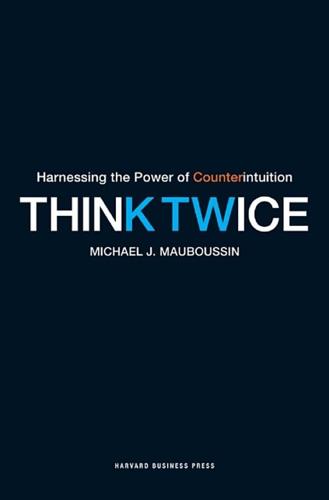
Think Twice: Harnessing the Power of Counterintuition
by
Michael J. Mauboussin
Published 6 Nov 2012
Using consumer feedback, Cinematch rapidly improved its ability to anticipate consumer tastes and now drives well over half of Netflix’s rentals, keeping users happy and reducing reliance on new releases. But the company’s executives realized that Cinematch did not have all the answers. So in 2006, they issued a challenge: Netflix will pay a $1 million prize for a program that predicts consumer preferences 10 percent better than Cinematch. As I write this, the Netflix Prize is still up for grabs, with the leading group 9.80 percent better than Cinematch. Two points bear emphasis. First, some really great minds are toiling on a problem that is worth a lot less to them than it is to Netflix. (Netflix executives freely admit that a winning algorithm is worth more than $1 million.)
…
Hoffman (Cambridge: Cambridge University Press, 2006), 87–103. 15. For more on the contest, see www.netflixprize.com. Clive Thompson, “If You Liked This, You’re Sure to Love That,” New York Times Magazine, November 23, 2008. Jordan Ellenberg, “The Netflix Challenge: This Psychologist Might Outsmart the Math Brains Competing for the Netflix Prize,” Wired Magazine, March 2008, 114–122. 16. Paul E. Meehl, Clinical versus Statistical Prediction: A Theoretical Analysis and a Review of the Evidence (Minneapolis: University of Minnesota Press, 1954); Robyn M. Dawes, David Faust, and Paul E. Meehl, “Clinical versus Actuarial Judgment,” in Heuristics and Biases: The Psychology of Intuitive Judgment, ed.
…
“Rivets and Redundancy.” BioScience 48, no. 5 (1998): 387. Eisenhardt, Kathleen M., and Donald N. Sull. “Strategy as Simple Rules.” Harvard Business Review, January 2001, 107–116. Ellenberg, Jordan. “The Netflix Challenge: This Psychologist Might Outsmart the Math Brains Competing for the Netflix Prize.” Wired Magazine, March, 2008, 114–122. Epley, Nicholas, and Thomas Gilovich. “The Anchoring-and-Adjustment Heuristic: Why the Adjustments Are Insufficient.” Psychological Science 17, no. 4 (2006): 311–318. Ernst, Cécile, and Jules Angst. Birth Order: Its Influence on Personality. Berlin: Springer-Verlag, 1983.
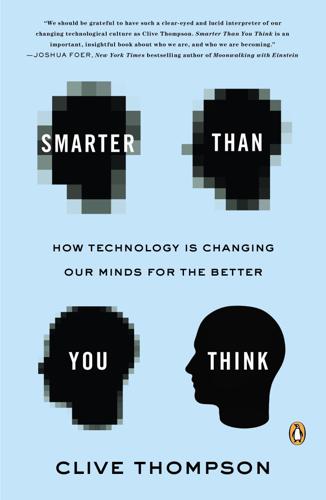
Smarter Than You Think: How Technology Is Changing Our Minds for the Better
by
Clive Thompson
Published 11 Sep 2013
the Galaxy Zoo: Tim Adams, “Galaxy Zoo and the New Dawn of Citizen Science,” The Observer (UK), March 17, 2012, accessed March 24, 2013, www.guardian.co.uk/science/2012/mar/18/galaxy-zoo-crowdsourcing-citizen-scientists. a one-million-dollar prize: Eliot Van Buskirk, “BellKor’s Pragmatic Chaos Wins $1 Million Netflix Prize by Mere Minutes,” Wired, September 21, 2009, accessed March 24, 2013, www.wired.com/business/2009/09/bellkors-pragmatic-chaos-wins-1-million-netflix-prize/; I also previously reported on the Netflix Prize in “If You Liked This, You’re Sure to Love That,” The New York Times Magazine, November 21, 2008, accessed March 24, 2013, www.nytimes.com/2008/11/23/magazine/23Netflix-t.html. I didn’t specifically note the increasing secrecy of the participants over time in my article, but the teams remarked on this in my interviews.
…
At best, companies have been able to deploy fairly simple polling- and-voting group thinking projects, often to tap in to what their customers want; clothing firms like Threadless let their users vote on user-submitted designs. Others have solved the motivational problem by offering substantial prizes. Netflix, for example, offered a one-million-dollar prize for whoever could improve its movie-recommendation algorithm by 10 percent. But while prizes motivate hard work, they can inhibit sharing. When people are competing for a big prize, they’re often not willing to talk about their smartest breakthrough ideas for fear that a rival will steal their work. (Indeed, as teams got closer to winning the Netflix prize, they became increasingly secretive.) Other corporations have solved the problems of motivation and secrecy by turning inward and creating internal “decision markets” where employees can pose ideas and vote on the best ones.
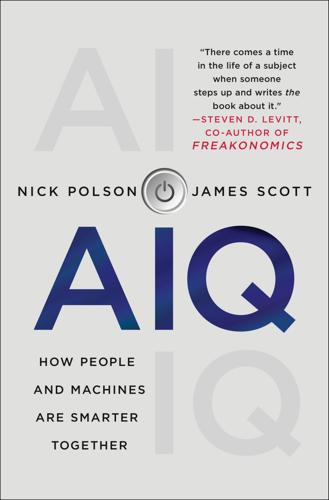
AIQ: How People and Machines Are Smarter Together
by
Nick Polson
and
James Scott
Published 14 May 2018
And it’s a good thing they didn’t pause to watch an extra episode of The Big Bang Theory before hitting the submit button. BellKor reached the finish line of the two-year race just 19 minutes and 54 seconds ahead of a second team, The Ensemble, who submitted an algorithm also reaching 10.06% improvement—just not quite fast enough. In retrospect, the Netflix Prize was a perfect symbol of the company’s early reliance on a core machine-learning task: algorithmically predicting how a subscriber would rate a film. Then, in March of 2011, three little words changed the future of Netflix forever: House of Cards. House of Cards was the first “Netflix Original Series,” the company’s first try at producing TV rather than merely distributing it.
…
Just as Wald solved his missing-data problem by building a model of a B-17’s encounter with an enemy fighter, Netflix solved its problem by building a model of a subscriber’s encounter with a film. And while Netflix’s current model is proprietary, the million-dollar model built by team BellKor’s Pragmatic Chaos, winner of the Netflix Prize, is posted for free on the web.8 Here’s the gist of how it works. (Remember, Netflix predicts ratings on a 1-to-5 scale, from which a like/dislike prediction can be made using a simple cutoff, e.g., four stars.) The fundamental equation here is Predicted Rating = Overall Average + Film Offset + User Offset + User-Film Interaction.
…
See health care and medicine Medtronic Menger, Karl Microsoft Microsoft Azure modeling assumptions and deep-learning models imputation and Inception latent feature massive models missing data and model rust natural language processing and prediction rules as reality versus rules-based (top-down) models training the model Moneyball Moore’s law Moravec paradox Morgenstern, Oskar Musk, Elon natural language processing (NLP) ambiguity and bottom-up approach chatbots digital assistants future trends Google Translate growth of statistical NLP knowing how versus knowing that natural language revolution “New Deal” for human-machine linguistic interaction prediction rules and programing language revolution robustness and rule bloat and speech recognition top-down approach word co-location statistics word vectors naturally occurring radioactive materials (NORM) Netflix Crown, The (series) data scientists history of House of Cards (series) Netflix Prize for recommender system personalization recommender systems neural networks deep learning and Friends new episodes and Inception model prediction rules and New England Patriots Newton, Isaac Nightingale, Florence coxcomb diagram (1858) Crimean War and early years and training evidence-based medicine legacy of “lady with the lamp” medical statistics legacy of nursing reform legacy of Nvidia Obama, Barack Office of Scientific Research and Development parallax pattern recognition cucumber sorting input and output learning a pattern maximum heart rate and prediction rules and toilet paper theft and See also prediction rules PayPal personalization conditional probability and latent feature models and Netflix and Wald’s survivability recommendations for aircraft and See also recommender systems; suggestion engines philosophy Pickering, Edward C.
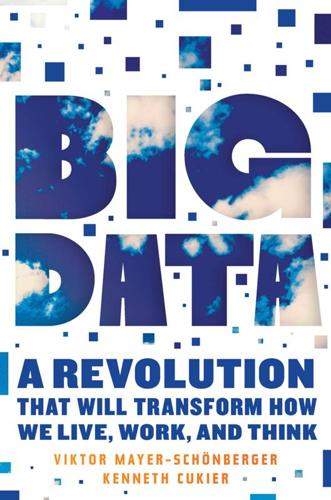
Big Data: A Revolution That Will Transform How We Live, Work, and Think
by
Viktor Mayer-Schonberger
and
Kenneth Cukier
Published 5 Mar 2013
“My goodness, it’s my whole personal life,” she told the Times reporter when he came knocking. “I had no idea somebody was looking over my shoulder.” The ensuing public outcry led to the ouster of AOL’s chief technology officer and two other employees. Yet a mere two months later, in October 2006, the movie rental service Netflix did something similar in launching its “Netflix Prize.” The company released 100 million rental records from nearly half a million users—and offered a bounty of a million dollars to any team that could improve its film recommendation system by at least 10 percent. Again, personal identifiers had been carefully removed from the data. And yet again, a user was re-identified: a mother and a closeted lesbian in America’s conservative Midwest, who because of this later sued Netflix under the pseudonym “Jane Doe.”
…
On the Netflix data release—Arvind Narayanan and Vitaly Shmatikov, “Robust De-Anonymization of Large Sparse Datasets,” Proceedings of the 2008 IEEE Symposium on Security and Privacy, p. 111 et seq. (http://www.cs.utexas.edu/~shmat/shmat_oak08netflix.pdf); Arvind Narayanan and Vitaly Shmatikov, “How to Break the Anonymity of the Netflix Prize Dataset,” October 18, 2006, arXiv:cs/0610105 [cs.CR] (http://arxiv.org/abs/cs/0610105). On identifying people from three characteristics—Philippe Golle, “Revisiting the Uniqueness of Simple Demographics in the US Population,” Association for Computing Machinery Workshop on Privacy in Electronic Society 5 (2006), p. 77.
…
Reason and Society in the Middle Ages. Oxford University Press, 1978. Nalimov, E. V., G. McC. Haworth, and E. A. Heinz. “Space-Efficient Indexing of Chess Endgame Tables.” ICGA Journal 23, no. 3 (2000), pp. 148–162. Narayanan, Arvind, and Vitaly Shmatikov. “How to Break the Anonymity of the Netflix Prize Dataset.” October 18, 2006, arXiv:cs/0610105 (http://arxiv.org/abs/cs/0610105). ———. “Robust De-Anonymization of Large Sparse Datasets.” Proceedings of the 2008 IEEE Symposium on Security and Privacy, p. 111 (http://www.cs.utexas.edu/~shmat/shmat_oak08netflix.pdf). Nazareth, Rita, and Julia Leite.

The Creativity Code: How AI Is Learning to Write, Paint and Think
by
Marcus Du Sautoy
Published 7 Mar 2019
The challenge was to produce an algorithm that was 10 per cent better than Netflix’s own algorithm in predicting what these 2,817,131 recommendations were. Given the data you had seen, your algorithm needed to predict how user 234,654 rated film 2666. To add some spice to the challenge, the first team that beat the Netflix algorithm by 10 per cent would receive a $1,000,000 prize. The catch was that if you won, you had to disclose your algorithm and give Netflix a non-exclusive licence to use the algorithm to recommend films to its users. Several progress prizes were offered on the way to the one-million-dollar prize. Each year a prize of $50,000 would be awarded to the team that had produced the best results so far, provided they at least improved on the previous year’s progress winner by 1 per cent.
…
It is open to biases coming from those classifying and will end up teaching the computer what we know already rather than finding new underlying trends. It could cause the algorithm to get stuck in a particularly human way of looking at the data. The best scenario is to train the algorithm to learn and spot patterns from pure raw data. This is what Netflix was hoping to do when it issued its Netflix prize challenge in 2006. It had developed its own algorithm to push users towards films they would like but thought a competition might stimulate the discovery of better algorithms. By that point Netflix had a huge amount of data from users who had watched films and rated them on a scale of 1–5. So it decided to publish 100,480,507 ratings spanning 480,189 anonymous customers evaluating 17,770 movies.
…
If you look at the actual films that were plotted, then indeed you will see that this shadow has picked out traits that we would recognise as distinct in films. Drama films are appearing in the top-right quadrant, action movies in the bottom left. This is the approach the team that eventually won the Netflix prize in 2009 successfully implemented. They essentially sought to identify a shadow in twenty dimensions that corresponds to twenty independent traits of films that would help predict what films users would like. The power of a computer is that it can run over a whole range of different shadows and pick out the best one to reveal structure, something that our brains and eyes cannot hope to do.

What's Yours Is Mine: Against the Sharing Economy
by
Tom Slee
Published 18 Nov 2015
When you rate a movie you can offer your opinion freely, having no reason to expect reward or punishment for any particular rating. You also have an incentive to give a rating that matches your actual opinion, as it enables Netflix to recommend movies that better match your tastes. Figure 3 shows the distribution of ratings for a set of 100 million ratings that Netflix released for its Netflix Prize competition. Figure 3. Ratings in the Netflix contest data set. The ratings are distributed among the available scores with a peak at about 3.5, so a rating of 4 or 5 is a pretty good rating and Netflix ratings help us to discriminate between one-star stinkers and five-star favorites. Yelp is a rating site for restaurants and other small businesses.
…
Even though Sharing Economy ratings are typically crammed into a small range, could a 4.9 rating still indicate a better experience than a 4.7? All the evidence to date says no, it cannot. Even in rating systems with widely-distributed ratings like Netflix, the relationship between an individual rating and the quality of user experience is murky. One of the results of the Netflix Prize competition was that individual ratings turn out to depend on factors that have nothing to do with the movie itself: people tend to grade relative to the existing rating, so highly rated films tend to stay highly rated. The best competitors managed to compensate for these effects, but only in an environment where individual movies were getting millions of ratings, quite different from the Sharing Economy case.

The Filter Bubble: What the Internet Is Hiding From You
by
Eli Pariser
Published 11 May 2011
This will often be in tension with pure optimization in the short term, because a personalization system with an element of randomness will (by definition) get fewer clicks. But as the problems of personalization become better known, it may be a good move in the long run—consumers may choose systems that are good at introducing them to new topics. Perhaps what we need is a kind of anti-Netflix Prize—a Serendipity Prize for systems that are the best at holding readers’ attention while introducing them to new topics and ideas. If this shift toward corporate responsibility seems improbable, it’s not without precedent. In the mid-1800s, printing a newspaper was hardly a reputable business. Papers were fiercely partisan and recklessly ideological.
…
When you use AddThis to share a piece of content on ABC News’s site (or anyone else’s), AddThis places a tracking cookie on your computer that can be used to target advertising to people who share items from particular sites. 6 “the cost is information about you”: Chris Palmer, phone interview with author, Dec 10, 2010. 7 accumulated an average of 1,500 pieces of data: Stephanie Clifford, “Ads Follow Web Users, and Get More Personal,” New York Times, July 30, 2009, accessed Dec. 19, 2010, www.nytimes.com/2009/07/31/business/media/31privacy.html. 7 96 percent of Americans: Richard Behar, “Never Heard of Acxiom? Chances Are It’s Heard of You.” Fortune, Feb. 23, 2004, accessed Dec. 19, 2010, http://money.cnn.com/magazines/fortune/fortune_archive/2004/02/23/362182/index.htm. 8 Netflix can predict: Marshall Kirkpatrick, “They Did It! One Team Reports Success in the $1m Netflix Prize,” ReadWriteWeb, June 26, 2009, accessed Dec. 19, 2010, www.readwriteweb.com/archives/they_did_it_one_team_reports_success_in_the_1m_net.php. 8 Web site that isn’t customized . . . will seem quaint: Marshall Kirpatrick, “Facebook Exec: All Media Will Be Personalized in 3 to 5 Years,” ReadWriteWeb, Sept. 29, 2010, accessed Jan. 30, 2011, www.readwriteweb.com/archives/facebook_exec_all_media_will_be_personalized_in_3.php. 8 “now the web is about ‘me’ ”: Josh Catone, “Yahoo: The Web’s Future Is Not in Search,” ReadWriteWeb, June 4, 2007, accessed Dec. 19, 2010, www.readwriteweb.com/archives/yahoo_personalization.php. 8 “tell them what they should be doing”: James Farrar, “Google to End Serendipity (by Creating It),” ZDNet, Aug. 17, 2010, accessed Dec. 19, 2010, www.zdnet.com/blog/sustainability/google-to-end-serendipity-by-creating-it/1304. 8 are becoming a primary news source: Pew Research Center, “Americans Spend More Time Following the News,” Sept. 12, 2010, accessed Feb 7, 2011, http://people-press.org/report/?
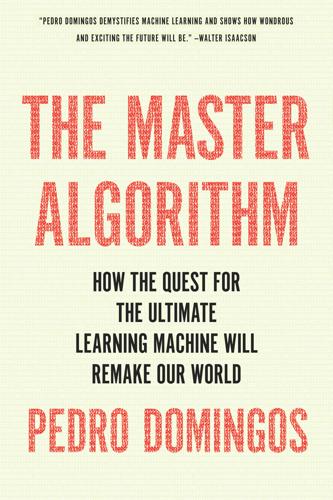
The Master Algorithm: How the Quest for the Ultimate Learning Machine Will Remake Our World
by
Pedro Domingos
Published 21 Sep 2015
Either way, to obtain a learner’s prediction for a given training example, we must first apply it to the original training set excluding that example and use the resulting classifier—otherwise the committee risks being dominated by learners that overfit, since they can predict the correct class just by remembering it. The Netflix Prize winner used metalearning to combine hundreds of different learners. Watson uses it to choose its final answer from the available candidates. Nate Silver combines polls in a similar way to predict election results. This type of metalearning is called stacking and is the brainchild of David Wolpert, whom we met in Chapter 3 as the author of the “no free lunch” theorem.
…
What if something fundamental is still missing, something all of us in the field, steeped in its history, can’t see? We need new ideas, and ideas that are not just variations on the ones we already have. That’s why I wrote this book: to start you thinking. I teach an evening class on machine learning at the University of Washington. In 2007, soon after the Netflix Prize was announced, I proposed it as one of the class projects. Jeff Howbert, a student in the class, got hooked and continued to work on it after the class was over. He wound up being a member of one of the two winning teams, two years after learning about machine learning for the first time. Now it’s your turn.
…
See Markov logic networks (MLNs) Moby Dick (Melville), 72 Molecular biology, data and, 14 Moneyball (Lewis), 39 Mooney, Ray, 76 Moore’s law, 287 Moravec, Hans, 288 Muggleton, Steve, 80 Multilayer perceptron, 108–111 autoencoder, 116–118 Bayesian, 170 driving a car and, 113 Master Algorithm and, 244 NETtalk system, 112 reinforcement learning and, 222 support vector machines and, 195 Music composition, case-based reasoning and, 199 Music Genome Project, 171 Mutation, 124, 134–135, 241, 252 Naïve Bayes classifier, 151–153, 171, 304 Bayesian networks and, 158–159 clustering and, 209 Master Algorithm and, 245 medical diagnosis and, 23 relational learning and, 228–229 spam filters and, 23–24 text classification and, 195–196 Narrative Science, 276 National Security Agency (NSA), 19–20, 232 Natural selection, 28–29, 30, 52 as algorithm, 123–128 Nature Bayesians and, 141 evolutionaries and, 137–142 symbolists and, 141 Nature (journal), 26 Nature vs. nurture debate, machine learning and, 29, 137–139 Neal, Radford, 170 Nearest-neighbor algorithms, 24, 178–186, 202, 306–307 dimensionality and, 186–190 Negative examples, 67 Netflix, 12–13, 183–184, 237, 266 Netflix Prize, 238, 292 Netscape, 9 NETtalk system, 112 Network effect, 12, 299 Neumann, John von, 72, 123 Neural learning, fitness and, 138–139 Neural networks, 99, 100, 112–114, 122, 204 convolutional, 117–118, 302–303 Master Algorithm and, 240, 244, 245 reinforcement learning and, 222 spin glasses and, 102–103 Neural network structure, Baldwin effect and, 139 Neurons action potentials and, 95–96, 104–105 Hebb’s rule and, 93–94 McCulloch-Pitts model of, 96–97 processing in brain and, 94–95 See also Perceptron Neuroscience, Master Algorithm and, 26–28 Newell, Allen, 224–226, 302 Newhouse, Neil, 17 Newman, Mark, 160 Newton, Isaac, 293 attribute selection, 189 laws of, 4, 14, 15, 46, 235 rules of induction, 65–66, 81, 82 Newtonian determinism, Laplace and, 145 Newton phase of science, 39–400 New York Times (newspaper), 115, 117 Ng, Andrew, 117, 297 Nietzche, Friedrich, 178 NIPS.

Doing Data Science: Straight Talk From the Frontline
by
Cathy O'Neil
and
Rachel Schutt
Published 8 Oct 2013
A training set is provided, an evaluation metric determined up front, and some set of rules is provided about, for example, how often competitors can submit their predictions, whether or not teams can merge into larger teams, and so on. Examples of machine learning competitions include the annual Knowledge Discovery and Data Mining (KDD) competition, the one-time million-dollar Netflix prize (a competition that lasted two years), and, as we’ll learn a little later, Kaggle itself. Some remarks about data science competitions are warranted. First, data science competitions are part of the data science ecosystem—one of the cultural forces at play in the current data science landscape, and so aspiring data scientists ought to be aware of them.
…
It encourages people to squeeze out better performing models, possibly at the risk of overfitting, but it also tends to make models much more complicated as they get better. One reason you don’t want competitions lasting too long is that, after a while, the only way to inch up performance is to make things ridiculously complicated. For example, the original Netflix Prize lasted two years and the final winning model was too complicated for them to actually put into production. Their Customers So why would companies pay to work with Kaggle? The hole that Kaggle is filling is the following: there’s a mismatch between those who need analysis and those with skills.
…
Data Mining Competitions Claudia drew a distinction between different types of data mining competitions. The first is the “sterile” kind, where you’re given a clean, prepared data matrix, a standard error measure, and features that are often anonymized. This is a pure machine learning problem. Examples of this first kind are KDD Cup 2009 and the Netflix Prize, and many of the Kaggle competitions. In such competitions, your approach would emphasize algorithms and computation. The winner would probably have heavy machines and huge modeling ensembles. KDD Cups All the KDD Cups, with their tasks and corresponding datasets, can be found at http://www.kdd.org/kddcup/index.php.

The Elements of Data Analytic Style
by
Jeff Leek
Published 1 Mar 2015
Random forests, another successful prediction algorithm, is based on a similar idea with classification trees. 7.8 Prediction is about tradeoffs Interpretability versus accuracy Speed versus accuracy Simplicity versus accuracy Scalability versus accuracy In some areas one of these components may be more important than others. The Netflix prize awarded $1,000,000 to the best solution to predicting what movies people would like. But the winning solution was so complicated it was never implemented by Netflix because it was impractical. 8. Causality The gold standard for causal data analysis is to combine specific experimental designs such as randomized studies with standard statistical analysis techniques.

The Deep Learning Revolution (The MIT Press)
by
Terrence J. Sejnowski
Published 27 Sep 2018
As a consequence, there are fewer parameters to train on each epoch, and the resulting network has fewer dependencies between units than would be the case if the same large network were trained on every epoch. Dropout decreases the error rate in deep learning networks by 10 percent, which is a large improvement. In 2009, Netflix conducted an open competition, offering a prize of $1 million to the first person who could reduce the error of their recommender system by 10 percent.16 Almost every graduate student in machine learning entered the competition. Netflix probably inspired $10 million of research for the cost of the prize. And deep networks are now a core technology for online streaming.17 Intriguingly, cortical synapses drop out at a high rate. On every spike along an input, the typical excitatory synapse in the cortex has a 90 percent failure rate.18 This is like a baseball team where almost all the players are batting .100.
…
If a network of simulated neurons is trained to read and then is damaged, it produces strikingly similar behavior” (76). 15. N. Srivastava, G. Hinton, A. Krizhevsky, I. Sutskever, and R. Salakhutdinov, “Dropout: A Simple Way to Prevent Neural Networks from Overfitting,” Journal of Machine Learning Research 15 (2014):1929–1958. 16. “Netflix Prize,” Wikipedia, last modified, August 23, 2017, https://en.wikipedia .org/wiki/Netflix_Prize. 17. Carlos A. Gomez-Uribe, Neil Hunt, “The Netflix Recommender System: Algorithms,” ACM Transactions on Management Information Systems 6, no. 4 (2016) , article no. 13. 18. T. M. Bartol Jr., C. Bromer, J. Kinney, M. A. Chirillo, J. N. Bourne, K. M.

Ethics of Big Data: Balancing Risk and Innovation
by
Kord Davis
and
Doug Patterson
Published 30 Dec 2011
For example, what Google considers Personally Identifiable Information (PII) may be substantially different from Microsoft’s definition. How are we to protect PII if we can’t agree on what we’re protecting? The increasing availability of open data (and increasing number of data breaches) that make cross-correlation and de-anonymization an increasingly trivial task. Let’s not forget the example of the Netflix prize. Finally, there is no mention anywhere, in any policy statement reviewed, no matter what it was called, that addressed the topic of reputation. Reputation might be considered an “aggregate” value comprised of personal information that is judged in one fashion or another. Again, however, this raises the question of what values an organization is motivated by when developing the constituent policies.
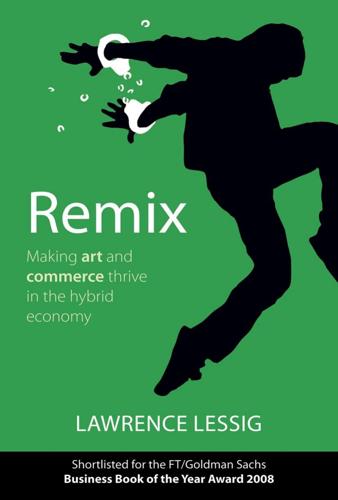
Remix: Making Art and Commerce Thrive in the Hybrid Economy
by
Lawrence Lessig
Published 2 Jan 2009
(The company was scolded by one of the Net’s leading bloggers in 2004 for failing to offer APIs.26 It is slowly responding.) Its purpose is to “improve the accuracy of predictions about how much someone is going to love a movie based on their movie preferences.”27 To achieve this end, Netflix runs a “Netflix Prize”—offering a grand prize of $1 million to anyone who improves Netflix’s own system by more than 10 percent. To enable this competition to happen, Netflix shared “a lot of anonymous rating data.” The company 80706 i-xxiv 001-328 r4nk.indd 137 8/12/08 1:55:20 AM REMI X 138 also increasingly offers through RSS feeds access to ranking information about its users’ choices.
…
See “Google Defies US Over Search Data,” BBC News, January 20, 2006, available at link #64; Maryclaire Dale, “Judge Throws Out Internet Blocking Law: Ruling States Parents Must Protect Children Through Less Restrictive Means,” MSNBC, March 22, 2007, available at link #65. Google prevailed in its effort to restrict the government’s search. See Gonzales v. Google, 234 F.R.D. 674 (N.D. Cal. 2006). 26. Phillip Torrone, “Netflix, Open Up or Die . . . ,” available at link #66. 27. Netflix, Netflix Prize, available at link #67 (last visited July 2, 2007). 28. Tapscott and Williams, Wikinomics, 183. 29. See Tim O’Reilly, “What Is Web 2.0: Design Patterns and Business Models for the Next Generation of Software,” O’Reilly, September 30, 2005, available at link #68. As Mary Madden summarizes the idea, it is “utilizing collective intelligence, providing networkenabled interactive services, giving users control over their own data.”
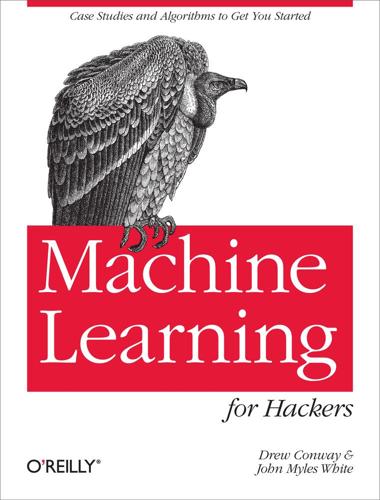
Machine Learning for Hackers
by
Drew Conway
and
John Myles White
Published 10 Feb 2012
For example, we briefly describe matrix multiplication in Chapter 9, even though almost every technique we’re going to exploit can be described in terms of matrix multiplications, whether it’s the standard linear regression model or the modern matrix factorization techniques that have become so popular lately thanks to the Netflix Prize. Because we’ll treat data rectangles, tables, and matrices interchangeably, we ask for your patience when we switch back and forth between those terms throughout this book. Whatever term we use, you should just remember that we’re thinking of something like Table 2-1 when we talk about data. Table 2-1.
…
x <- 1:10 y <- x ^ 2 fitted.regression <- lm(y ~ x) errors <- residuals(fitted.regression) squared.errors <- errors ^ 2 mse <- mean(squared.errors) mse #[1] 52.8 The solution to this problem of scale is trivial: we take the square root of the mean squared error to get the root mean squared error, which is the RMSE measurement we also tried out earlier in this chapter. RMSE is a very popular measure of performance for assessing machine learning algorithms, including algorithms that are far more sophisticated than linear regression. For just one example, the Netflix Prize was scored using RMSE as the definitive metric of how well the contestants’ algorithms performed. x <- 1:10 y <- x ^ 2 fitted.regression <- lm(y ~ x) errors <- residuals(fitted.regression) squared.errors <- errors ^ 2 mse <- mean(squared.errors) rmse <- sqrt(mse) rmse #[1] 7.266361 One complaint that people have with RMSE is that it’s not immediately clear what mediocre performance is.
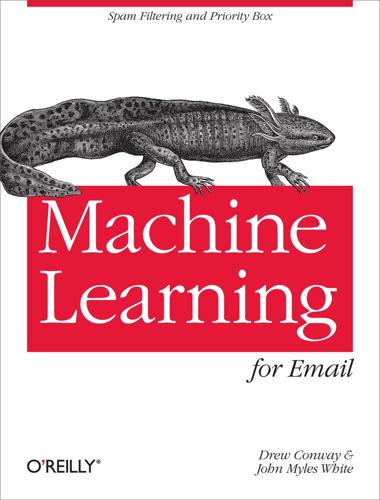
Machine Learning for Email
by
Drew Conway
and
John Myles White
Published 25 Oct 2011
For example, we won’t explicitly use matrix multiplication anywhere in this book, even though almost every technique we’re going to exploit can be described in terms of matrix multiplications, whether it’s the standard linear regression model or the modern matrix factorization techniques that have become so popular lately thanks to the Netflix prize. Because we’ll treat data rectangles, tables, and matrices interchangeably, we ask for your patience when we switch back and forth between those terms throughout this book. Whatever term we use, you should just remember that we’re thinking of something like Table 2-1 when we talk about data. Table 2-1.
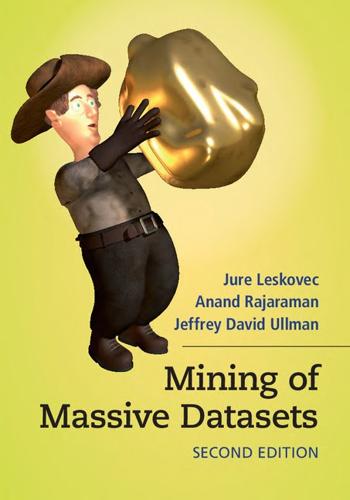
Mining of Massive Datasets
by
Jure Leskovec
,
Anand Rajaraman
and
Jeffrey David Ullman
Published 13 Nov 2014
Anderson, The Long Tail: Why the Future of Business is Selling Less of More, Hyperion Books, New York, 2006. [4]Y. Koren, “The BellKor solution to the Netflix grand prize,” www.netflixprize.com/assets/GrandPrize2009_BPC_BellKor.pdf 2009. [5]G. Linden, B. Smith, and J. York, “Amazon.com recommendations: item-to-item collaborative filtering,” Internet Computing 7:1, pp. 76–80, 2003. [6]M. Piotte and M. Chabbert, ”The Pragmatic Theory solution to the Netflix grand prize,” www.netflixprize.com/assets/GrandPrize2009_BPC_PragmaticTheory.pdf 2009. [7]A. Toscher, M. Jahrer, and R. Bell, “The BigChaos solution to the Netflix grand prize,” www.netflixprize.com/assets/GrandPrize2009_BPC_BigChaos.pdf 2009
…
The process converges to a local optimum, although to have a good chance of obtaining a global optimum we must either repeat the process from many starting matrices, or search from the starting point in many different ways. ✦The NetFlix Challenge: An important driver of research into recommendation systems was the NetFlix challenge. A prize of $1,000,000 was offered for a contestant who could produce an algorithm that was 10% better than NetFlix’s own algorithm at predicting movie ratings by users. The prize was awarded in Sept., 2009. 9.7References for Chapter 9 [1] is a survey of recommendation systems as of 2005. The argument regarding the importance of the long tail in on-line systems is from [2], which was expanded into a book [3]
…
(2)Movie Recommendations: Netflix offers its customers recommendations of movies they might like. These recommendations are based on ratings provided by users, much like the ratings suggested in the example utility matrix of Fig. 9.1. The importance of predicting ratings accurately is so high, that Netflix offered a prize of one million dollars for the first algorithm that could beat its own recommendation system by 10%.1 The prize was finally won in 2009, by a team of researchers called “Bellkor’s Pragmatic Chaos,” after over three years of competition. (3)News Articles: News services have attempted to identify articles of interest to readers, based on the articles that they have read in the past.
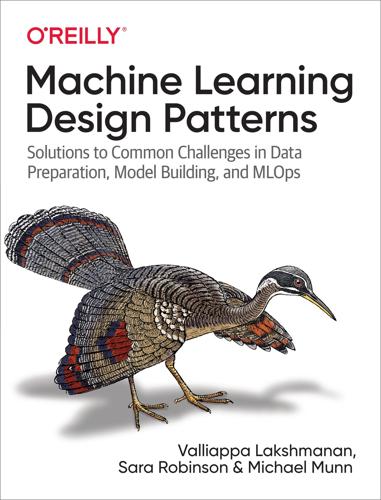
Machine Learning Design Patterns: Solutions to Common Challenges in Data Preparation, Model Building, and MLOps
by
Valliappa Lakshmanan
,
Sara Robinson
and
Michael Munn
Published 31 Oct 2020
Stacking is an ensemble learning technique that combines the outputs of several different ML models as the input to a secondary ML model that makes predictions. Trade-Offs and Alternatives Ensemble methods have become quite popular in modern machine learning and have played a large part in winning well-known challenges, perhaps most notably the Netflix Prize. There is also a lot of theoretical evidence to back up the success demonstrated on these real-world challenges. Increased training and design time One downside to ensemble learning is increased training and design time. For example, for a stacked ensemble model, choosing the ensemble member models can require its own level of expertise and poses its own questions: Is it best to reuse the same architectures or encourage diversity?
…
lineage tracking, Lineage tracking in ML pipelines linear models, Models and Frameworks, Solution long short-term memory model (see LSTM) low latency, The Machine Learning Process, Trade-Offs and Alternatives-Trade-Offs and Alternatives, Why It Works, Phase 1: Building the offline model, Problem-Feast, Why It Works LSTM, Choosing a model architecture, Solution, Sequence models M machine learning engineers (see ML engineers) machine learning feasibility study, Discovery machine learning framework, Reproducibility machine learning life cycle (see ML life cycle) machine learning models, Models and Frameworks machine learning problems (see supervised learning; unsupervised learning) machine learning, definition of, Models and Frameworks MAE (mean absolute error), Problem MAP (mean average precision), Problem MapReduce, Why It Works matrix factorization, Problem Representation Design Patterns MD5 hash, Cryptographic hash mean absolute error (MAE), Problem mean average precision (MAP), Problem Mesh TensorFlow, Model parallelism mesh-free approximation, Data-driven discretizations microservices architecture, Problem min-max scaling, Linear scaling-Linear scaling Mirrored Variable, Synchronous training MirroredStrategy, Synchronous training, Synchronous training Mixed Input Representation, Deterministic inputs ML approximation, Solution, Interpolation and chaos theory ML engineersrole of, Roles, Scale, Why It Works, Responsible AI, Problem tasks of, Problem, Solution, Solution, Model versioning with a managed service ML life cycle, ML Life Cycle-Discovery, Development-Deployment ML Operations (see MLOps) ML pipelines, The Machine Learning Process ML researchers, Responsible AI MLflow, Solution MLOps, Deployment, Tactical phase: Manual development MNIST dataset, Images as pixel values, Combining different image representations MobileNetV2, Phase 1: Building the offline model, Phase 1: Building the offline model Mockus, Jonas, Bayesian optimization model builders, Responsible AI(see also data scientists, ML researchers) Model Card Toolkit, Model Cards Model Cards, Model Cards model evaluation, The Machine Learning Process, Problem, Lineage tracking in ML pipelines, Limitations of explanations, Solution(see also Continued Model Evaluation design pattern) model parallelism, Solution, Model parallelism-Model parallelism model parameters, Problem-Problem model understanding (see explainability) Model Versioning design pattern, Reproducibility Design Patterns, Design Pattern 27: Model Versioning-New models versus new model versions, Pattern Interactions model, pre-trained, Implementing transfer learning -Pre-trained embeddings, Fine-tuning versus feature extraction, Responsible AI, Pattern Interactions model, text classification, Problem, Custom serving function, Problem, Multiple serving functions monolithic applications, Problem Monte Carlo approach, Monte Carlo methods-Unbounded domains multi-hot encoding, Array of categorical variables multiclass classification problems, Design Pattern 6: Multilabel multilabel classification, Sigmoid output for models with two classes-Parsing sigmoid results, Solution Multilabel design pattern, Problem Representation Design Patterns, Design Pattern 6: Multilabel -One versus rest multilabel, multiclass classification (see Multilabel design pattern) Multimodal Input design pattern, Design Pattern 4: Multimodal Input-Multimodal feature representations and model interpretability, Pattern Interactions multimodal inputs, definition of, Trade-Offs and Alternatives MultiWorkerMirroredStrategy, Synchronous training, Synchronous training MySQL, Cached results of batch serving MySQL Cluster, Alternative implementations N naive Bayes, Bagging natural language understanding (NLU), Natural Language Understanding Netflix Prize, Trade-Offs and Alternatives Neural Machine Translation, Model parallelism neural networks, Models and Frameworks, Data-driven discretizations Neutral Class design pattern, Problem Representation Design Patterns, Design Pattern 9: Neutral Class -Reframing with neutral class, Responsible AI, Pattern Interactions NLU (natural language understanding), Natural Language Understanding NNLM, Context language models nonlinear transformations, Nonlinear transformations-Nonlinear transformations numerical data, Data and Feature Engineering-Data and Feature Engineering O objective function, Bayesian optimization OCR (optical character recognition), Pre-trained models one versus rest approach, One versus rest one-hot encoding, One-hot encoding-One-hot encoding, Problem-Problem, Choosing the embedding dimension, Static method OneDeviceStrategy, Synchronous training, Asynchronous training online machine learning, Scheduled retraining online prediction, The Machine Learning Process, Trade-Offs and Alternatives online update, High-throughput data streams ONNX, Model export optical character recognition (OCR), Pre-trained models orchestration, definition of, Development versus production pipelines outliers, Linear scaling output layer bias, Weighted classes overfit model, Problem, Problem(see also physics-based model) overfitting, Overfitting a batch-Overfitting a batch P parameter server architecture, Asynchronous training parameter sharing, Multitask learning-Multitask learning ParameterServerStrategy, Asynchronous training partial differential equation (see PDE) Parzen estimator, Bayesian optimization Pattern Language, A, What Are Design Patterns?
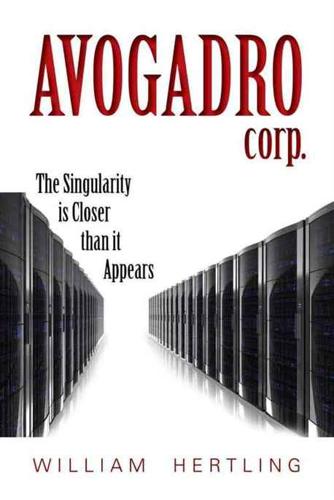
Avogadro Corp
by
William Hertling
Published 9 Apr 2014
“Sean hired me not because I knew anything about language analysis but because I was a leading competitor in the Netflix competition. Netflix recommends movies that you’d enjoy watching. The better Netflix can do this, the more you as a customer enjoy using Netflix’s movie rental service. Several years ago, Netflix offered a million dollar prize to anyone who could beat their own algorithm by ten percent.” “What’s amazing and even counterintuitive about recommendation algorithms is that they don’t depend on understanding anything about the movie. Netflix does not, for example, have a staff of people watching movies to categorize and rate them, just to find the latest sci-fi space action thriller that I happen to like.
…
While the analysis module determined goals and objectives from the email, the optimization module used fragments from thousands of other emails to create a realistic email written in a voice very similar to that of the sender. David relished the success of the team, and wished he could share with them what they had accomplished. Their project was the culmination of nearly three years of dedicated research and development. It had started with David’s work on the Netflix Prize before he was hired at Avogadro, although even that work had been built on the shoulders of geniuses that had come before him. Then there were eight months of him and Mike laboring on their own to prove out the idea enough to justify an entire team. Finally, during the last eighteen months, an entire R&D team worked on the project, building the initial architecture, and then incrementally improving the effectiveness of the system week after week.

Binge Times: Inside Hollywood's Furious Billion-Dollar Battle to Take Down Netflix
by
Dade Hayes
and
Dawn Chmielewski
Published 18 Apr 2022
The company launched its first recommendation engine, Cinematch, in February 2000 to help subscribers navigate a library of five thousand movie titles that was too unwieldy to browse. Six years later, it held a closely watched contest to boost the accuracy of its recommendations by 10 percent. Netflix dangled a $1 million prize, though the ultimate lure for nerds was access to a data set of over 100 million ratings on 17,700 movies from 480,189 customers. A development team led by AT&T research engineers calling themselves BellKor’s Pragmatic Chaos claimed the prize in 2009, though Netflix implemented a stripped-down, less computationally demanding version of their algorithm for predicting consumer tastes.
…
Some additional Marc Randolph material comes from his presentation at UK public event series 5x15 on October 2, 2019, https://youtu.be/l-2rS0BhukE. CHAPTER 3: NETFLIX LIVES UP TO ITS NAME Ted Sarandos, Neil Hunt, Anthony Wood, Chris Albrecht, Cindy Holland, Steve Swasey, and Roy Price were interviewed by the authors. The chapter also derives material from Randolph’s That Will Never Work; Eliot Van Buskirk, “How the Netflix Prize Was Won,” Wired, September 22, 2009; Richard Barton’s interview by Dawn Chmielewski for “How Netflix’s Reed Hastings Rewrote the Hollywood Script”; Austin Carr, “Inside Netflix’s Project Griffin: The Forgotten History of Roku Under Reed Hastings,” Fast Company, January 23, 2013; Brian Stelter, “Netflix to Pay Nearly $1 Billion to Add Films to On-Demand Service,” New York Times, August 10, 2010; Hastings’s comments on Qwikster are drawn from Hastings and Meyer, No Rules Rules; Dorothy Pomerantz, “Did Disney Just Save Netflix?

Exponential Organizations: Why New Organizations Are Ten Times Better, Faster, and Cheaper Than Yours (And What to Do About It)
by
Salim Ismail
and
Yuri van Geest
Published 17 Oct 2014
Internal Usage: Maps display resulting gestures for all users SCALE Attribute: Community & Crowd Google Interface: AdWords Description: User picks keywords to advertise against Internal Usage: Google places ads against search results SCALE Attribute: Algorithms GitHub Interface: Version control system Description: Multiple coders updating software sequentially and in parallel Internal Usage: Platform keeps all contributions in sync SCALE Attribute: Community & Crowd Zappos Interface: Hiring process Description: Incentive competitions Internal Usage: Narrows down candidates from large pool SCALE Attribute: Engagement Gigwalk Interface: Task availability Description: Gigwalk workers receive location-based, simple tasks when available Internal Usage: Matches task demand with supply of Gigwalkers SCALE Attribute: Staff on Demand One final way to think about Interfaces is that they help manage abundance. While most processes are optimized around scarcity and efficiency, SCALE elements generate large result sets, meaning Interfaces are geared towards filtering and matching. As an example, keep in mind that the Netflix prize generated 44,104 entries that needed to be filtered, ranked, prioritized and scored. Why Important? Dependencies or Prerequisites • Filter external abundance into internal value • Bridge between external growth drivers and internal stabilizing factors • Automation allows scalability • Standardized processes to enable automation • Scalable externalities • Algorithms (in most cases) Dashboards Given the huge amounts of data from customers and employees becoming available, ExOs need a new way to measure and manage the organization: a real-time, adaptable dashboard with all essential company and employee metrics, accessible to everyone in the organization.
…
With very little internal inertia (that is, number of employees, assets or organizational structures), they demonstrate extraordinary flexibility, which is a critical quality in today’s volatile world. This remarkable characteristic has been well demonstrated by Netflix. As mentioned earlier, the company offered a $1 million prize (Engagement) to anyone who could improve its rental recommendation program. What is less well known is that Netflix never implemented the winning algorithm. Why? Because, tellingly, the market had already moved on. By the conclusion of the contest the industry had shifted away from rental DVDs; meanwhile Netflix’s streaming video business was exploding and, unfortunately, the winning algorithm didn’t apply to streaming recommendations.
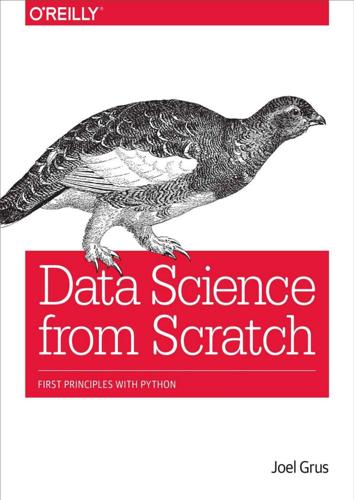
Data Science from Scratch: First Principles with Python
by
Joel Grus
Published 13 Apr 2015
= other_interest_id and similarity > 0] return sorted(pairs, key=lambda (_, similarity): similarity, reverse=True) which suggests the following similar interests: [('Hadoop', 0.8164965809277261), ('Java', 0.6666666666666666), ('MapReduce', 0.5773502691896258), ('Spark', 0.5773502691896258), ('Storm', 0.5773502691896258), ('Cassandra', 0.4082482904638631), ('artificial intelligence', 0.4082482904638631), ('deep learning', 0.4082482904638631), ('neural networks', 0.4082482904638631), ('HBase', 0.3333333333333333)] Now we can create recommendations for a user by summing up the similarities of the interests similar to his: def item_based_suggestions(user_id, include_current_interests=False): # add up the similar interests suggestions = defaultdict(float) user_interest_vector = user_interest_matrix[user_id] for interest_id, is_interested in enumerate(user_interest_vector): if is_interested == 1: similar_interests = most_similar_interests_to(interest_id) for interest, similarity in similar_interests: suggestions[interest] += similarity # sort them by weight suggestions = sorted(suggestions.items(), key=lambda (_, similarity): similarity, reverse=True) if include_current_interests: return suggestions else: return [(suggestion, weight) for suggestion, weight in suggestions if suggestion not in users_interests[user_id]] For user 0, this generates the following (seemingly reasonable) recommendations: [('MapReduce', 1.861807319565799), ('Postgres', 1.3164965809277263), ('MongoDB', 1.3164965809277263), ('NoSQL', 1.2844570503761732), ('programming languages', 0.5773502691896258), ('MySQL', 0.5773502691896258), ('Haskell', 0.5773502691896258), ('databases', 0.5773502691896258), ('neural networks', 0.4082482904638631), ('deep learning', 0.4082482904638631), ('C++', 0.4082482904638631), ('artificial intelligence', 0.4082482904638631), ('Python', 0.2886751345948129), ('R', 0.2886751345948129)] For Further Exploration Crab is a framework for building recommender systems in Python. Graphlab also has a recommender toolkit. The Netflix Prize was a somewhat famous competition to build a better system to recommend movies to Netflix users. Chapter 23. Databases and SQL Memory is man’s greatest friend and worst enemy. Gilbert Parker The data you need will often live in databases, systems designed for efficiently storing and querying data.
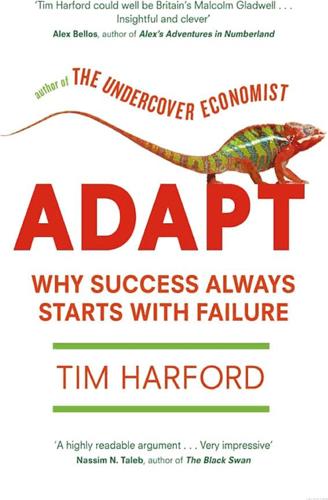
Adapt: Why Success Always Starts With Failure
by
Tim Harford
Published 1 Jun 2011
The better the recommendations, the happier the customer, so in March 2006 the founder and chief executive of Netflix, Reed Hastings, met some colleagues to discuss how they might improve the software that made the recommendations. Hastings had been inspired by the story of John Harrison, and suggested offering a prize of $1m to anyone who could do better than Netflix’s in-house algorithm, Cinematch. The Netflix prize, announced in October 2006, struck a chord with the Web 2.0 generation. Within days of the prize announcement, some of the best minds in the relevant fields of computer science were on the case. Within a year, the leading entries had reduced Cinematch’s recommendation errors by more than 8 per cent – close to the million-dollar hurdle of 10 per cent.
…
One Netflix user alleged that the data released by Netflix didn’t sufficiently conceal her anonymity, and might allow others to discover that she was a lesbian by connecting her with ‘anonymous’ reviews. (Ryan Singel, ‘Netflix spilled your Brokeback Mountain secret, lawsuit claims’, Wired, 17 December 2009, http://www.wired.com/threatlevel/2009/12/netflix-privacy-lawsuit/) 110 ‘One of the goals of the prize’: author interview, 13 December 2007. 110 Not everybody responds to such incentives: ‘Russian maths genius Perelman urged to take $1m prize’, BBC News, 24 March 2010, http://news.bbc.co.uk/1/hi/8585407.stm 111 The vaccine prize takes the form of an agreement: the advanced market commitment idea was developed by Michael Kremer in ‘Patent buyouts: a mechanism for encouraging innovation’, Quarterly Journal of Economics, 113:4 (1998), 1137–67; but also see http://www.vaccineamc.org/ and the Center for Global Development’s ‘Making markets for vaccines’, http://www.cgdev.org/section/initiatives/_archive/vaccinedevelopment 111 Only the very largest pharmaceutical companies spend more than: Medicines Australia, ‘Global pharmaceutical industry facts at a glance’, p. 3, http://www.medicinesaustralia.com.au/pages/images/Global%20-%20facts%20at%20a%20glance.pdf 111 Children in Nicaragua received: Amanda Glassman, ‘Break out the champagne!
…
.), 37, 65, 77–8, 223, 227, 228; Battle of 73 Easting and, 72–3, 79; counterinsurgency strategy and, 53–5, 57, 61, 64, 74, 75, 79, 258, 262; streak of sedition, 54–5, 56, 58, 59, 78; in Tal Afar, 53–6, 61, 64, 79; on Vietnam War, 46, 47, 50, 56, 78 McNamara, Robert, 46–7, 49–50, 60, 68, 69, 76, 78 medical profession, 120–1; clinical trials, 123–4, 125–6; in history, 121–3, 140–1; rigorous evidence and, 121, 122–3, 125–7 Medical Research Council, 100 Melvill, Mike, 112, 114 Menand, Louis, 7 Merton Rule, 169–72, 176, 177 microfinance organisations, 116, 117–18, 120 Microsoft, 11, 12, 90, 78668 >112, 241, 242 Miguel, Edward, 129, 131 Millennium prizes, 110, 114 mission command doctrine, 79 Mitchelhill, Steve, 193 Mitchell, Reginald, 88, 89, 114, 223, 262 molecular biology, 98–9; DNA research, 99–100; prizes for, 109, 110 Mondrian, Piet, 260 moon landings, 84, 113 Moore, Paul, 211, 213, 214, 250 Morse, Adair, 210, 213 Moulin, Sylvie, 127–8 Movin’ Out (ballet/musical), 247–50, 253–4, 257, 258–9 Mprize, 110 Mullainathan, Sendhil, 135 Murray, Euan, 163–5 Myers, Dave, 233 Nagl, John, 52, 61, 63, 65, 66, 76 Napoleon, 41, 107 > NASA, 113 National Academy of Sciences, 6 National Bureau of Economic Research, 145 National Institutes of Health, US (NIH), 99–100, 101, 102–3 Netflix, 108–9 New Songdo City (South Korea), 152 New Zealand, 161, 176 Newsweek, 63 Newton, Sir Isaac, 105 Nobel prizes, 68, 75, 100, 108, 116, 120 nuclear industry, 184, 185, 187, 191–3, 215, 220, 227–8, 230–1 Obama, President Barack, 5, 195 Odean, Terrance, 35 Office for Financial Research, US, 195 Ofshe, Richard, 252–3 Oklahoma! (musical), 248 Oliver, Jamie, 29–30 Olken, Benjamin, 133–4, 142, 143 Opportunity International, organic products, 159, 160, 226 organisations: ‘bottom-up’ adaptation, 58, 60–1, 134; grandiosity and, 27–8; idealised hierarchy, 40–1, 42, 46–7, 49–50, 55; peer monitoring, 229–31, 232–3; standardisation and, 28; traditional, 29, 31, 35; see also corporations and companies; government and politics Orgel, Leslie, 174, 175, 176, 177, 178, 180 Ormerod, Paul, 18–19 outsourcing, 90 Pace, General Peter, 42, 43 Packer, George, 43 Page, Larry, 231–2 Page, Scott, 49 Palchinsky, Peter, 21–5, 26, 27, 30, 31, 49, 118, 250 ‘Palchinsky principles’, 25, 28, 29, 36, 207, 224, 235, 250; see also selection principle; survivability principle; variation principle Palmer, Geoffrey, 170–1 Palo Alto Research Center (Parc), 11 Parkinson, Elizabeth, 249 patents, 90, 91–2, 94, 95–7, 104, 110, 111, 113, 114, 179 Patriquin, Captain Travis, 58 Pentagon Papers, 62 PEPFAR, 119 Pepys, Samuel, 96 Perelman, Grigory, 110 Perrow, Charles, 185, 186, 191, 194–5 Peters, Tom, 8, 10, 244 Petraeus, General David, 37, 59–62, 63–4, 65, 74, 78, 256 Pfizer, 90 pharmaceutical industry, 94, 110–11, 114, 236–7 PhilCo, 11 Philippines, 136 Phillips, Michael, 249 Picasso, Pablo, 260 pilot schemes, 29–30 Pinochet, General Augusto, 70 Piper-Alpha disaster (July 1988), 181–3, 184, 186, 187, 208–9, 219 planning, 19, 68–9; centrally planned economies, 11, 21, 23–6, 68–9, 70; ‘effects-based operations’ (EBO), 67–8, 74; localised/fleeting information and, 21–2, 24, 25, 31, 52–3, 57–8, 66–7, 71–3, 74, 78, 79; quantitative analysis, 46–7, 69, 78 PlayPumps, 118–19, 120, 130, 142 pneumococcal infections, 110–11, 114 poker, 31–2 politics see government and politics POSCO, 152 ‘postcode lottery’ concept, 28 poverty, global, 4, 5, 115–16 printing industry, early, 10 problem solving, 4–6, 14; evolutionary theory and, 14–15, 16, 17; idealised view of, 40–1, 42, 46–7, 49–50, 55; lessons from history and, 63, 65–7; technology and, 84, 94; ‘Toaster Project’, 1–2, 4, 12; see also decision making; innovation; ‘Palchinsky principles’; trial and error Procter & Gamble, 9, 12 public services, 28, 141, 213–14 public transport, 161–2 Pullman, 9, 15 PwC, 196–200 Pye, David, 80 Al Qaeda in Iraq (AQI), 39, 40, 43, 51, 54, 57, 77 quantitative analysis, 46–7, 69, 78 Rajan, Raghuram, 75 randomised trials, 235–8; development and, 127–9, 131, 132, 133, 134, 135–6, 137–40, 141 Raskin, Aza, 221 Reagan, President Ronald, 6 Reason, James, 184–5, 186–7, 208, 209, 218 Reinikka, Ritva, 142 renewable energy technology, 84, 91, 96, 130, 168, 169–73, 179, 245 research and development, 83–5, 87–95, 99–104, 111; see also innovation Ricks, Thomas, 61 risk, psychology of, 32–5, 253–4, 256 risk management, 183, 185, 187–90, 206–7 Roche, 97 Roger Preston Partners, 170–1 Romer, Paul, 150–1 Royal Air Force (RAF), 80–2, 88 Royal College of Physicians, 122 Royal Observatory, 105, 106, 107 Rumsfeld, Donald, 59, 61; centralisation and, 47, 69, 71, 72, 76, 196; refusal of advice/feedback, 43–4, 45, 46, 50, 57, 60, 62, 63, 65, 67, 223, 256; term ‘insurgency’ and, 42–3, 55, 63, 250 Russia, 21–7, 68–9, 250 Rutan, Burt, 112 Sachs, Jeffrey, 129–30 Saddam Hussein, 44, 45, 66, 73 Santa Fe Institute, 16, 103 Schmidt, Eric, 230, 231, 232 Schneider Trophy, 88, 89, 110, 114 Schulz, Kathryn, Being Wrong, 262 Schumacher, E.F., 181 Schwab, Charles, 243 Schwarzkopf, Norman, 67, 68 Scott, Owen, 118–19 scurvy, 122–3 Second World War, 81–2, 83, 85, 89, 124–5, 126 Securities and Exchange Commission (SEC), 210, 212–13 selection principle, 25–6, 27, 207, 224, 250, 259; charter cities and, 149, 152, 153; development aid, 117, 140–3, 149, 152, 153; evolutionary theory and, 13, 14, 15, 16–17, 23, 86; pilot schemes and, 29–30 Sepp, Kalev, 61 Sewall, Sarah, 61, 63 Shell, 9, 244–5 Shenzhen, 150, 152 Shimura, Goro, 247 Shindell, Drew, 160* Shinseki, General Eric, 43–4, 45 Shirky, Clay, 90 Shovell, Admiral Sir Clowdisley, 105 SIGMA I war game, 50 Sims, Karl, 13–14, 174, 176 Singapore, 150 Singer, 9, 10, 15 Skunk Works division, Lockheed, 89, 93, 224, 242 Smith, Adam, 143, 147 Sobel, Dava, Longitude, 107* solar power, 84, 91, 96, 179, 245 Solidarity movement, Polish, 26 Sorkin, Andrew Ross, 193 South Africa, 147 South Korea, 146–7, 152 Soviet Union, 21–7, 68–9, 250 space tourism, 112–13, 114 Spitfire aircraft, 81–2, 83, 84–5, 87–9, 114, 262 Spock, Dr Benjamin, Baby and Child Care, 120–1 Sri Lanka, 136 Stalin, Joseph, 24, 250 Starbucks, 28, 159, 164, 165, 166 Sunstein, Cass, 177–8 Supermarine, 81, 87–9 survivability principle, 25, 36, 153, 207–8, 215, 224, 235, 243, 250 Svensson, Jakob, 142–3 Tabarrok, Alex, 96 Taiwan, 148 Taleb, Nassim, The Black Swan, 83 Target (discount retailer), 243 Taylor, A.J.P., 89 Taylor, Charles, 136 technologies, new: centralisation and, 71, 75, 76, 79, 226, 227, 228; decentralisation and, 76; ‘effects-baseerations’ (EBO), 67–8, 74; evolutionary theory and, 13–14, 174; first Gulf War and, 67, 71, 72–3, 79; fraud and, 212; hi-tech start-ups, 90, 91; innovation and, 89–90, 91, 94–5, 239–40; iPhone and Android apps, 90, 93; Iraq war and, 71, 72, 74, 78–9, 196; Robert McNamara and, 47, 69; open-source software movement, 230; prizes and, 108–9; product space concept and, 145–8; Project CyberSyn, 69–72; randomised experiments and, 235–7; return on investment and, 83–4; safety systems and, 193; software, 12, 76, 90, 92–3, 230, 241–2; unpredictability and, 84–5; virtual decision making, 49; see also internet terrorism, 4, 51, 54, 57, 96–7, 192 Tesco, 75, 226 Tetlock, Philip, 6–8, 10, 16, 17, 19, 66 Thaler, Richard, 33, 34, 177–8, 254, 256 Tharp, Twyla, 247–51, 253–4, 256, 257, 258–9, 262 Thatcher, Margaret, 20 Thre Mile Island disaster (1979), 36, 184, 185, 191–2, 193, 220 Thwaites, Thomas, ‘Toaster Project’, 1–2, 4, 12 Timpson, John, 226–7, 228–9, 230, 232–3 Tipton, Jennifer, 257 Toyota, 9, 159, 161, 165 Transitron, 11 Transocean, 216, 217, 218–19 Trenchard, Sir Hugh, 88 trial and error, 12, 14, 17, 19–20, 21, 35, 36, 66, 220; decentralisation and, 31, 174–5, 232, 234; Thomas Edison and, 236, 238; individuals and, 31–5; Iraq war and, 64–5, 66–7; market system, 20; randomised experiments, 235–9; Muhammad Yunus and, 116, 117–18 Tversky, Amos, 32, 253 Tyndall, John, 154–6 Tzara, Tristan, 247 Uganda, 142–3 United Arab Emirates, 147 university students, 260–1 US Air Force, 93 US Steel, 9 USAID, 119 Utah, University of, 99 van Helmont, Jan Baptist, 121–2, 141 variation principle, 25–6, 79, 100, 117, 140, 174–5, 207, 224, 235, 250; charter cities and, 152–3; evolutionary theory and, 13, 14, 16–17, 23; grandiosity and, 27–8; pluralism and, 85; uniform standards and, 28–9 Vaze, Prashant, 177–8 Venter, Craig, 109 Vickers, 88 Vietnam war, 46–7, 49–50, 56, 62, 64, 68, 69, 78, 243–4 Virgin Group, 112, 243 Wallis, Barnes, 88 Wallstrom, Margot, 139 Wal-Mart, 3, 75, 226, 238 Warhol, Andy, 28 Waterman, Robert, 8, 10 Watson, James, 98–9 Weinstein, Jeremy, 137, 138 Weiss, Bob, 110 Westinghouse Electric, 9 whistleblowers, 211–14, 215, 218–19, 220, 229 White Knight One, 112, 114 Whole Foods Market, 224–6, 227, 228, 229, 232, 234 Wikipedia, 230 Williams, Mike, 216–17 Willumstad, Robert, 193–4 W.L.
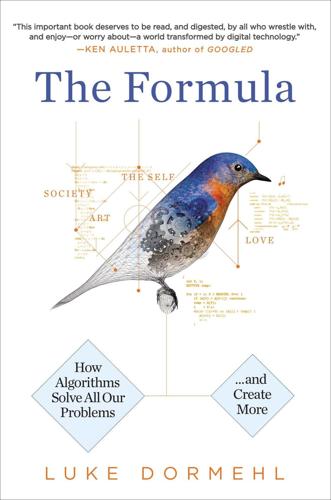
The Formula: How Algorithms Solve All Our Problems-And Create More
by
Luke Dormehl
Published 4 Nov 2014
In other areas—particularly as relate to law—a reliance on algorithms might simply justify existing bias and lack of understanding, in the same way that the “filter bubble” effect described in Chapter 1 can result in some people not being presented with certain pieces of information, which may take the form of opportunities. “It’s not just you and I who don’t understand how these algorithms work—the engineers themselves don’t understand them entirely,” says scholar Ted Striphas. “If you look at the Netflix Prize, one of the things the people responsible for the winning entries said over and over again was that their algorithms worked, even though they couldn’t tell you why they worked. They might understand how they work from the point of view of mathematical principles, but that math is so complex that it is impossible for a human being to truly follow.
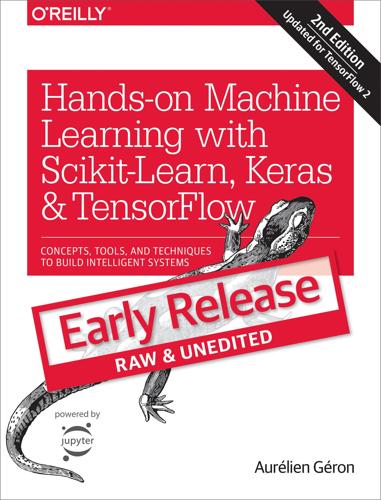
Hands-On Machine Learning With Scikit-Learn, Keras, and TensorFlow: Concepts, Tools, and Techniques to Build Intelligent Systems
by
Aurelien Geron
Published 14 Aug 2019
Moreover, as we discussed in Chapter 2, you will often use Ensemble methods near the end of a project, once you have already built a few good predictors, to combine them into an even better predictor. In fact, the winning solutions in Machine Learning competitions often involve several Ensemble methods (most famously in the Netflix Prize competition). In this chapter we will discuss the most popular Ensemble methods, including bagging, boosting, stacking, and a few others. We will also explore Random Forests. Voting Classifiers Suppose you have trained a few classifiers, each one achieving about 80% accuracy. You may have a Logistic Regression classifier, an SVM classifier, a Random Forest classifier, a K-Nearest Neighbors classifier, and perhaps a few more (see Figure 7-1).
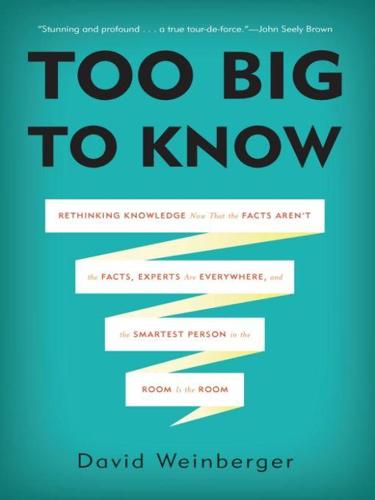
Too Big to Know: Rethinking Knowledge Now That the Facts Aren't the Facts, Experts Are Everywhere, and the Smartest Person in the Room Is the Room
by
David Weinberger
Published 14 Jul 2011
Then, of course, startups and Web 2.0 companies began holding “jellies,” which are like jams but bring together multiple smaller companies.32 Because the Net lets us form expert networks of just about any size and configuration, from twosomes to crowds to massively multiplayer games, the expertise of networks need not be equal to the expertise of its smartest member—or even cumulative. The complex, multiway interactions the Net enables means that networks of experts can be smarter than the sum of their participants. For example, BellKor’s Pragmatic Chaos was able to win the Netflix prize because the Internet not only made it feasible to assemble experts from around the world but also made it possible for those experts to collaborate. While crowdsourcing can aggregate information—people in every neighborhood of New York City can report on what their local groceries are charging for diapers—networked experts who are talking with one another can build on what they know.
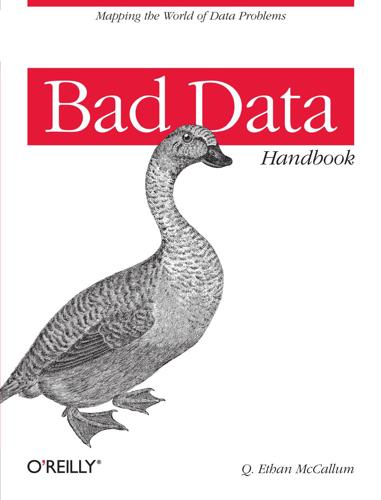
Bad Data Handbook
by
Q. Ethan McCallum
Published 14 Nov 2012
As the value of the approach becomes better-known, the demand for part-time or project-based machine-learning work has grown, but it’s often hard for a traditional engineering team to effectively work with outside experts in the field. I’m going to talk about some of the things I learned while running an outsourced project through Kaggle,[73] a community of thousands of researchers who participate in data competitions modeled on the Netflix Prize. This was an extreme example of outsourcing: we literally handed over a dataset, a short description, and a success metric to a large group of strangers. It had almost none of the traditional interactions you’d expect, but it did teach me valuable lessons that apply to any interactions with machine-learning specialists.
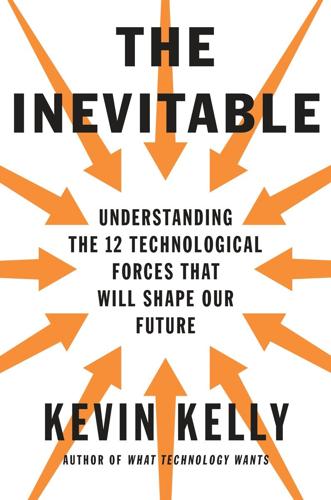
The Inevitable: Understanding the 12 Technological Forces That Will Shape Our Future
by
Kevin Kelly
Published 6 Jun 2016
GE has launched over 400 new products: Steve Lohr, “The Invention Mob, Brought to You by Quirky,” New York Times, February 14, 2015. Netflix announced an award: Preethi Dumpala, “Netflix Reveals Million-Dollar Contest Winner,” Business Insider, September 21, 2009. Forty thousand groups submitted: “Leaderboard,” Netflix Prize, 2009. 150,000 car fanatics: Gary Gastelu, “Local Motors 3-D-Printed Car Could Lead an American Manufacturing Revolution,” Fox News, July 3, 2014. 3-D-printed electric car: Paul A. Eisenstein, “Startup Plans to Begin Selling First 3-D-Printed Cars Next Year,” NBC News, July 8, 2015. 7: FILTERING 8 million new songs: Private correspondence with Richard Gooch, CTO, International Federation of the Phonographic Industry, April 15, 2015.

Custodians of the Internet: Platforms, Content Moderation, and the Hidden Decisions That Shape Social Media
by
Tarleton Gillespie
Published 25 Jun 2018
Information, Communication, and Society 12 (3): 444–59. ———. 2016. “The Blogosphere and Its Problems: Web 2.0 Undermining Civic Webspaces.” First Monday 21 (6). http://ojs-prod-lib.cc.uic.edu/ojs/index.php/fm/article/view/6788. HALLINAN, BLAKE, AND TED STRIPHAS. 2016. “Recommended for You: The Netflix Prize and the Production of Algorithmic Culture.” New Media and Society 18 (1): 117–37. HANDS, JOSS. 2013. “Introduction: Politics, Power, and ‘Platformativity.’” Culture Machine 14: 1–9. HARIMAN, ROBERT, AND JOHN LOUIS LUCAITES. 2003. “Public Identity and Collective Memory in U.S. Iconic Photography: The Image of ‘Accidental Napalm.’”

The Data Detective: Ten Easy Rules to Make Sense of Statistics
by
Tim Harford
Published 2 Feb 2021
But see in contrast Mark Ledwich and Anna Zaitsev, “Algorithmic Extremism: Examining YouTube’s Rabbit Hole of Radicalization,” Cornell University, arXiv:1912.11211, https://arxiv.org/abs/1912.11211. 37. Ryan Singal, “Netflix Spilled Your Brokeback Mountain Secret, Lawsuit Claims,” Wired, December 17, 2009, https://www.wired.com/2009/12/netflix-privacy-lawsuit/; and Blake Hallinan and Ted Striphas, “Recommended for You: The Netflix Prize and the Production of Algorithmic Culture,” New Media and Society, 2016, https://journals.sagepub.com/doi/pdf/10.1177/1461444814538646. Rule Eight: Don’t Take Statistical Bedrock for Granted 1. This is a translation of a Danish TV interview, discussed in Peter Vinthagen Simpson, “Hans Rosling: ‘You Can’t Trust the Media,’” The Local, September 5, 2015, https://www.thelocal.se/20150905/hans-rosling-you-cant-trust-the-media. 2.
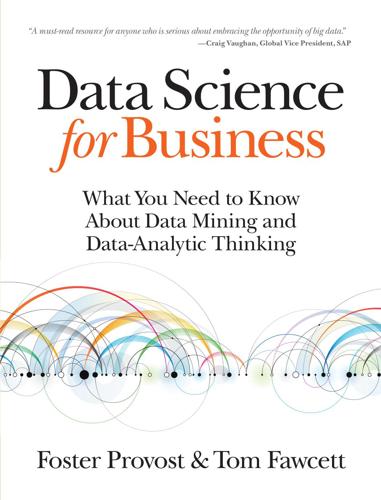
Data Science for Business: What You Need to Know About Data Mining and Data-Analytic Thinking
by
Foster Provost
and
Tom Fawcett
Published 30 Jun 2013
[70] There are some technicalities to the rules of the Netflix Challenge, which you can find on the Wikipedia page. [71] The winning team, Bellkor’s Pragmatic Chaos, had seven members. The history of the contest and the team evolution is complicated and fascinating. See this Wikipedia page on the Netflix Prize. [72] Thanks to one of the members of the winning team, Chris Volinsky, for his help here. [73] The debate sometimes can bear fruit. For example, thinking whether we have all the requisite information might reveal a new attribute that could be obtained that would increase the possible predictability
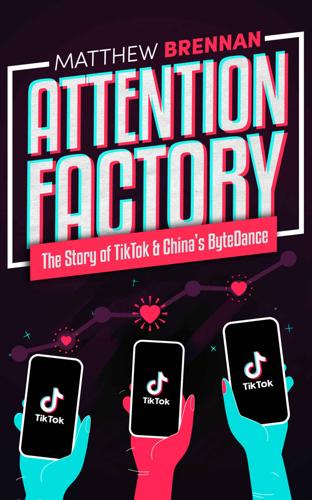
Attention Factory: The Story of TikTok and China's ByteDance
by
Matthew Brennan
Published 9 Oct 2020
66 https://techcrunch.com/2012/12/05/prismatic/ 67 http://yingdudasha.cn/ 68 Image source: https://m.weibo.cn/2745813247/3656157740605616 * “Real stuff” is my imperfect translation of 干货 gānhuò, which could also be translated as “the real McCoy” or “something of substance” Chapter 3 Recommendation, From YouTube to TikTok Chapter Timeline 2009 – Netflix awards a $1 million prize for an algorithm that increased the accuracy of their video recommendation by 10% 2011 – YouTube introduces machine learning algorithmic recommendation engine, Sibyl, with immediate impact 2012 Aug – ByteDance launches news aggregation app Toutiao 2012 Sep t – AlexNet breakthrough at the ImageNet challenge triggers a global explosion of interest in AI 2013 Mar – Facebook changes its newsfeed to a “personalized newspaper ” 2014 April – Instagram begins using an “explore ” tab of personalized content 2015 – Google Brain’s deep learning algorithms begin supercharging a wide variety of Google products, including YouTube recommendations It was 2010, and YouTube had a big problem.
…
With search engines, the user provides an unambiguous indication of intent by what they type into the search bar. Recommendation has no explicit declaration of intent; it must infer the user’s preferences based solely on their previous behavior. An early pioneer of online content recommendation was StumbleUpon, 83 founded in 2001, a recommendation driven browser toolbar extension. Netflix also famously awarded a $1 million prize for an algorithm that increased their recommendation system’s accuracy by 10% in 2009. The importance of online recommendation first became evident in e-commerce through prompts such as “Customers who bought this item also bought…” 84 In general, recommendation systems rely on two key processes: “content-based filtering,” and “collaborative filtering.”
…
For ByteDance, this would be the beginning of a new era that would completely redefine the company. * * * 91 The book (Chinese only) can be found here https://github.com/jzmq/book/blob/master/novel/%E6%8E%A8%E8%8D%90%E7%B3%BB%E7%BB%9F%E5%AE%9E%E8%B7%B5.pdf 92 Xiang’s team came second in Netflix’s 2009 one-million-dollar prize competition to improve their recommendation algorithm. 93 http://www.nbd.com.cn/articles/2019-03-14/1310042.html 94 Zhu Wenjia (Chinese: 朱文佳 ) 95 https://www.leiphone.com/news/201801/cEc03ORUAeiwytnC.html 96 Presentation slides with notes https://cloud.tencent.com/developer/article/1052655 97 https://blog.ycombinator.com/the-hidden-forces-behind-toutiao-chinas-content-king/ 98 https://youtu.be/raIUQP71SBU?

Hands-On Machine Learning With Scikit-Learn and TensorFlow: Concepts, Tools, and Techniques to Build Intelligent Systems
by
Aurélien Géron
Published 13 Mar 2017
Moreover, as we discussed in Chapter 2, you will often use Ensemble methods near the end of a project, once you have already built a few good predictors, to combine them into an even better predictor. In fact, the winning solutions in Machine Learning competitions often involve several Ensemble methods (most famously in the Netflix Prize competition). In this chapter we will discuss the most popular Ensemble methods, including bagging, boosting, stacking, and a few others. We will also explore Random Forests. Voting Classifiers Suppose you have trained a few classifiers, each one achieving about 80% accuracy. You may have a Logistic Regression classifier, an SVM classifier, a Random Forest classifier, a K-Nearest Neighbors classifier, and perhaps a few more (see Figure 7-1).

Superintelligence: Paths, Dangers, Strategies
by
Nick Bostrom
Published 3 Jun 2014
This again foreshadows another later theme: the difficulty of anticipating all specific ways in which some particular plausible-seeming rule might go wrong. 73. Nilsson (2009, 319). 74. Minsky (2006); McCarthy (2007); Beal and Winston (2009). 75. Peter Norvig, personal communication. Machine-learning classes are also very popular, reflecting a somewhat orthogonal hype-wave of “big data” (inspired by e.g. Google and the Netflix Prize). 76. Armstrong and Sotala (2012). 77. Müller and Bostrom (forthcoming). 78. See Baum et al. (2011), another survey cited therein, and Sandberg and Bostrom (2011). 79. Nilsson (2009). 80. This is again conditional on no civilization-disrupting catastrophe occurring. The definition of HLMI used by Nilsson is “AI able to perform around 80% of jobs as well or better than humans perform” (Kruel 2012). 81.

Artificial Intelligence: A Modern Approach
by
Stuart Russell
and
Peter Norvig
Published 14 Jul 2019
For example, if the data strips out the name, social security number, and street address, but includes date of birth, gender, and zip code, then, as shown by Latanya Sweeney (2000), 87% of the U.S. population can be uniquely re-identified. Sweeney emphasized this point by re-identifying the health record for the governor of her state when he was admitted to the hospital. In the Netflix Prize competition, de-identified records of individual movie ratings were released, and competitors were asked to come up with a machine learning algorithm that could accurately predict which movies an individual would like. But researchers were able to re-identify individual users by matching the date of a rating in the Netflix database with the date of a similar ranking in the Internet Movie Database (IMDB), where users sometimes use their actual names (Narayanan and Shmatikov, 2006).
…
Nalwa, V. S. (1993). A Guided Tour of Computer Vision. Addison-Wesley. Narayanan, A., Shi, E., and Rubinstein, B. I. (2011). Link prediction by de-anonymization: How we won the Kaggle social network challenge. In IJCNN-11. Narayanan, A. and Shmatikov, V. (2006). How to break anonymity of the Netflix prize dataset. arXiv:cs/0610105. Nash, J. (1950). Equilibrium points in N–person games. PNAS, 36, 48–49. Nash, P. (1973). Optimal Allocation of Resources Between Research Projects. Ph.D. thesis, University of Cambridge. Nayak, P. and Williams, B. (1997). Fast context switching in real–time propositional reasoning.
…
., 1060, 1107 needle in a haystack, 234 negation, 235 negative example, 675 negative literal, 235 negative side effects, 1038 negotiation set, 631 Neil, M., 548, 1094 Neiswanger, W., 838, 1116 NELL (Never-Ending Language Learning), 901 Nelson, B., 1061, 1086 Nelson, G., 47, 1110 Nelson, P. Q., 48, 1104 Nemhauser, G. L., 551, 1107 Nemirovski, A., 161, 1087, 1107 Nesterov, Y., 161, 1107 Netflix Prize, 1042 network tomography, 473 Neumann, M., 930, 1109 neural architecture search (NAS), 821, 838 neural network, 35, 38, 42, 801, 750–839 convolutional, 44 expressiveness, 35 feedforward, 802 hardware, 35 learning, 35 multilayer, 40 recurrent, 802, 823–826, 911–915 NeurIPS, 45, 53, 478, 668, 738, 800, 839, 873, 1031, 1046 neurobiology, 1031 NEUROGAMMON (backgammon program), 866 neuron, 29, 35, 801 neuroscience, 29, 29 Newborn, M., 126, 1108 Newcomb, S., 1032 Newell, A., 20, 36, 37, 79, 124, 125, 265, 266, 310, 329, 398, 400, 1103, 1107, 1113 Newman, R, 984, 1088, 1093 Newton, I., 19, 67, 138, 160, 483, 735, 1107 Newton-Raphson method, 139 NEXTKB (knowledge base), 357 Ney, H., 515, 903, 931, 1101, 1108 Ng, A.Y., 586–588, 735, 736, 779, 863, 868, 872, 903, 986, 1055, 1085, 1088, 1091, 1101, 1102, 1107 Ng, M., 29, 1118 Nguyen, R, 900, 905, 1090, 1099 Nguyen, T.
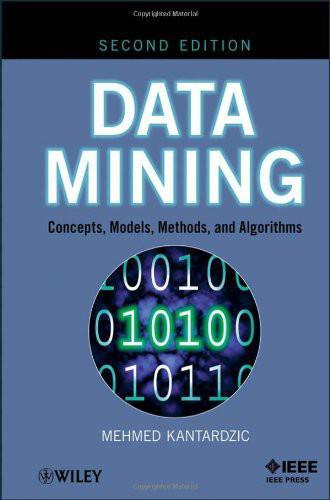
Data Mining: Concepts, Models, Methods, and Algorithms
by
Mehmed Kantardzić
Published 2 Jan 2003
The algorithm requires almost no parameters to tune, and is still very effective even for the most complex classification problems, but at the same time it could be sensitive to noise and outliers. Ensemble-learning approach showed all advantages in one very famous application, Netflix $1 million competition. The Netflix prize required substantial improvement in the accuracy of predictions on how much someone is going to love a movie based on his or her previous movie preferences. Users’ rating for movies was 1 to 5 stars; therefore, the problem was classification task with five classes. Most of the top-ranked competitors have used some variations of ensemble learning, showing its advantages in practice.

Free Speech: Ten Principles for a Connected World
by
Timothy Garton Ash
Published 23 May 2016
DeNardis 2014, 235–36 131. see Emily Steel and April Dembosky, ‘Facebook Raises Fears with Ad Tracking’, Financial Times, 23 September 2012, http://www.ft.com/intl/cms/s/0/6cc4cf0a-0584-11e2-9ebd-00144feabdc0.html#axzz3rracetFy 132. see Mayer-Schönberger et al. 2013 133. a useful summary is given by Nate Anderson, ‘“Anonymized” Data Really Isn’t—and Here’s Why Not’, arstechnica, http://perma.cc/Z3N7-7TC3. Sweeney’s article was published in Journal of Law, Medicine and Ethics, no. 25, 1997, 98–110 134. Mayer-Schönberger et al. 2013, 154–55 135. see the paper by Arvind Narayanan and Vitaly Shmatikov, ‘Robust De-anonymization of Large Datasets (How to Break Anonymity of the Netflix Prize Dataset)’, University of Texas, 2008, and their useful FAQs at http://perma.cc/9PBE-5BW5. For even more serious examples of the reidentification of supposedly anonymised medical data, see Nuffield Council on Bioethics 2015, 66–69 136. Ghonim 2012, chapters 3 and 4. He was the anonymous administrator of the Facebook page and used Tor to conceal his IP address 137.
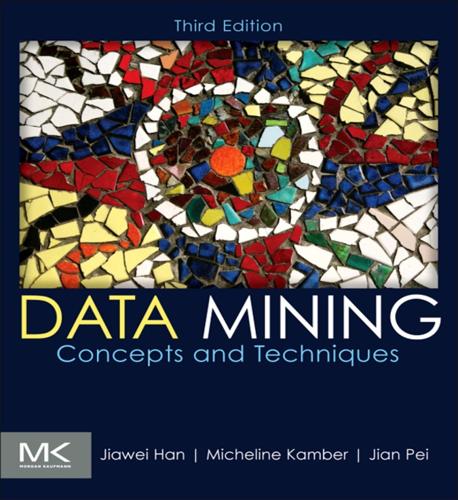
Data Mining: Concepts and Techniques: Concepts and Techniques
by
Jiawei Han
,
Micheline Kamber
and
Jian Pei
Published 21 Jun 2011
Content-based recommender systems are limited by the features used to describe the items they recommend. Another challenge for both content-based and collaborative recommender systems is how to deal with new users for which a buying history is not yet available. Hybrid approaches integrate both content-based and collaborative methods to achieve further improved recommendations. The Netflix Prize was an open competition held by an online DVD-rental service, with a payout of $1,000,000 for the best recommender algorithm to predict user ratings for films, based on previous ratings. The competition and other studies have shown that the predictive accuracy of a recommender system can be substantially improved when blending multiple predictors, especially by using an ensemble of many substantially different methods, rather than refining a single technique.

When to Rob a Bank: ...And 131 More Warped Suggestions and Well-Intended Rants
by
Steven D. Levitt
and
Stephen J. Dubner
Published 4 May 2015
. / 53 “A comprehensive Wall Street Journal article”: Sarah Rubenstein, “Why Generic Doesn’t Always Mean Cheap,” The Wall Street Journal, March 13, 2007. 57 “FOR $25 MILLION, NO WAY . . .”: “The virtues of offering big prizes to encourage . . . curing disease”: See Levitt, “Fight Global Pandemics (or at Least Find a Good Excuse When You’re Playing Hooky),” Freakonomics.com, May 18, 2007; “or improving Netflix’s algorithms”: See Levitt, “Netflix $ Million Prize,” Freakonomics.com, October 6, 2006. / 59 “As reported by ABC News”: See Matthew Cole, “U.S. Will Not Pay $25 Million Osama Bin Laden Reward, Officials Say,” ABCNews.com, May 19, 2011. 61 “CAN WE PLEASE GET RID OF THE PENNY ALREADY?”: A “60 Minutes segment called ‘Making Cents’”: See Morley Safer, “Should We Make Cents?
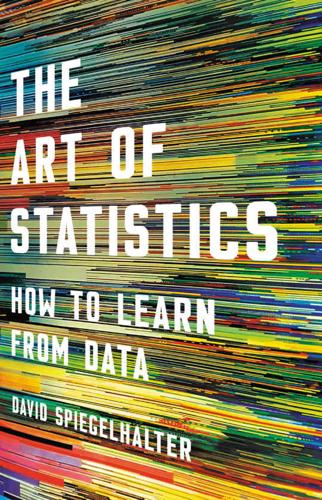
The Art of Statistics: How to Learn From Data
by
David Spiegelhalter
Published 2 Sep 2019
A major problem is that these algorithms tend to be inscrutable black boxes—they come up with a prediction, but it is almost impossible to work out what is going on inside. This has three negative aspects. First, extreme complexity makes implementation and upgrading a great effort: when Netflix offered a $1m prize for prediction recommendation systems, the winner was so complicated that Netflix ended up not using it. The second negative feature is that we do not know how the conclusion was arrived at, or what confidence we should have in it: we just have to take it or leave it. Simpler algorithms can better explain themselves.
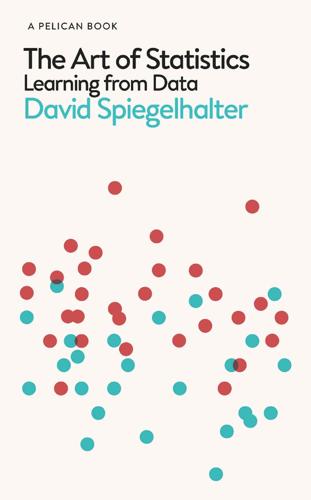
The Art of Statistics: Learning From Data
by
David Spiegelhalter
Published 14 Oct 2019
A major problem is that these algorithms tend to be inscrutable black boxes – they come up with a prediction, but it is almost impossible to work out what is going on inside. This has three negative aspects. First, extreme complexity makes implementation and upgrading a great effort: when Netflix offered a $1m prize for prediction recommendation systems, the winner was so complicated that Netflix ended up not using it. The second negative feature is that we do not know how the conclusion was arrived at, or what confidence we should have in it: we just have to take it or leave it. Simpler algorithms can better explain themselves.

The Slow Fix: Solve Problems, Work Smarter, and Live Better in a World Addicted to Speed
by
Carl Honore
Published 29 Jan 2013
Teenager invents method for detecting pancreatic cancer: Jake Andraka won first place at the 2012 Intel International Science and Engineering Fair (Intel ISEF), a program of the Society for Science and the Public. IBM idea jams: From the company website at https://www.collaborationjam.com/ Netflix offers $1 million prize: “Innovation Prizes – And the Winner Is,” Economist, 5 August 2010. Fiat builds first crowdsourced car: “The Case for Letting Customers Design Your Products,” Inc. Magazine, 20 September 2011. Prototype military vehicle crowdsourced: Based on interview with Ariel Ferreira of Local Motors.

Competing on Analytics: The New Science of Winning
by
Thomas H. Davenport
and
Jeanne G. Harris
Published 6 Mar 2007
Netflix hired mathematicians with programming experience to write the algorithms and code to define clusters of movies, connect customer movie rankings to the clusters, evaluate thousands of ratings per second, and factor in current Web site behavior—all to ensure a personalized Web page for each visiting customer. Netflix has also created a $1 million prize for quanitative analysts outside the company who can improve the cinematch algorithm by at least 10 percent. Netflix CEO Reed Hastings notes, “If the Starbucks secret is a smile when you get your latte, ours is that the Web site adapts to the individual’s taste.”1 Netflix analyzes customers’ choices and customer feedback on the movies they have rented—over 1 billion reviews of movies they liked, loved, hated, and so forth—and recommends movies in a way that optimizes both the customer’s taste and inventory conditions.
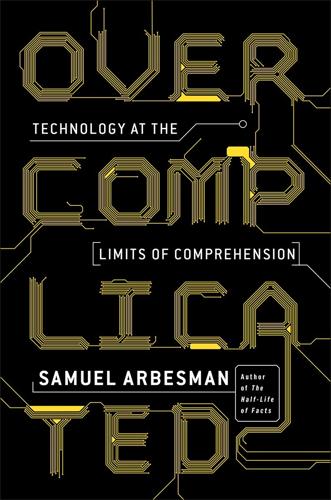
Overcomplicated: Technology at the Limits of Comprehension
by
Samuel Arbesman
Published 18 Jul 2016
The sophisticated machine learning techniques used in linguistics—employing probability and a large array of parameters rather than principled rules—are increasingly being used in numerous other areas, both in science and outside it, from criminal detection to medicine, as well as in the insurance industry. Even our aesthetic tastes are rather complicated, as Netflix discovered when it awarded a prize for improvements in its recommendation engine to a team whose solution was cobbled together from a variety of different statistical techniques. The contest seemed to demonstrate that no simple algorithm could provide a significant improvement in recommendation accuracy; the winners needed to use a more complex suite of methods in order to capture and predict our personal and quirky tastes in films.
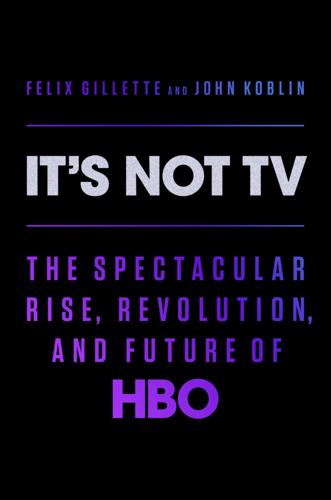
It's Not TV: The Spectacular Rise, Revolution, and Future of HBO
by
Felix Gillette
and
John Koblin
Published 1 Nov 2022
GO TO NOTE REFERENCE IN TEXT “Before I could drive”: Rob Owen, “Netflix Wants to Rule the World,” Pittsburgh Post-Gazette, November 21, 2018. GO TO NOTE REFERENCE IN TEXT “the only other person”: “Ted Sarandos,” The Interviews, Television Academy Foundation. GO TO NOTE REFERENCE IN TEXT a $1-million award: Steve Lohr, “Netflix Awards $1 Million Prize and Starts a New Contest,” New York Times, Sept. 21, 2009. GO TO NOTE REFERENCE IN TEXT named Netflix’s CEO Hastings: Michael V. Copeland, “Reed Hastings: Leader of the Pack,” Fortune, November 18, 2010. GO TO NOTE REFERENCE IN TEXT In December, during an interview: Tim Arango, “Time Warner Views Netflix as Fading Star,” New York Times, December 12, 2010.
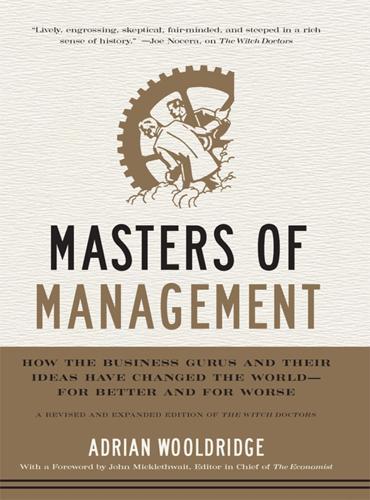
Masters of Management: How the Business Gurus and Their Ideas Have Changed the World—for Better and for Worse
by
Adrian Wooldridge
Published 29 Nov 2011
They also discover that the crowds don’t always have their best interests at heart: when Justin Bieber, a Canadian teenage pop star, asked his fans for suggestions as to what country he should visit next, the most popular answer was North Korea.9 One popular solution to the problem of oversupply is to use prizes to give crowdsourcing a focus and structure. The value of prizes being offered by corporations has more than tripled over the past decade, to $375 million.10 Netflix offers a $1 million prize to anyone who can improve its film recommendation system by 10 percent. Frito-Lay offers prizes to people who can come up with new TV ads for its products. Indeed, prizes have become businesses in their own right: InnoCentive has created a network of 170,000 scientists who stand ready to solve R&D problems for a price.
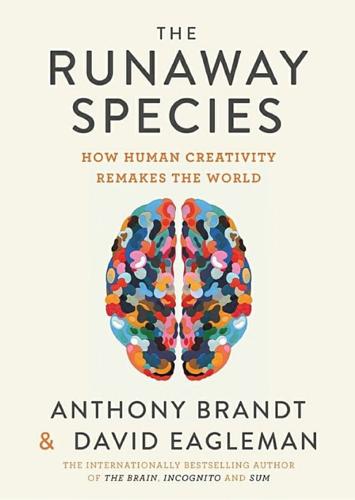
The Runaway Species: How Human Creativity Remakes the World
by
David Eagleman
and
Anthony Brandt
Published 30 Sep 2017
The prize eventually went to Mojave Aerospace’s SpaceShipOne By spreading the net widely, realizing the dream of privatized space travel came a step closer. And this crowdsourcing strategy is becoming increasingly popular. When Netflix wanted to boost its algorithms for personalized movie suggestions, the company realized it would be cheaper to sponsor a $1 million global prize than do the work in-house. Netflix published a sample set of data, with the goal of a 10 percent improvement over its own high-water mark. Tens of thousands of teams competed. Most of the attempts didn’t make the cut, but two teams surpassed Netflix’s desired threshold.
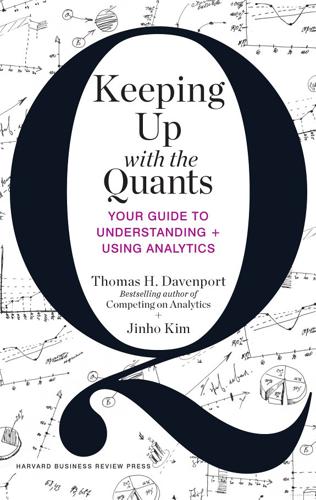
Keeping Up With the Quants: Your Guide to Understanding and Using Analytics
by
Thomas H. Davenport
and
Jinho Kim
Published 10 Jun 2013
Netflix has provided a large data set that tells you how nearly half a million people have rated about 18,000 movies. Based on these ratings, you are asked to predict the ratings of these users for movies in the set that they have not rated. The first team to beat the accuracy of Netflix’s proprietary algorithm by a certain margin wins a prize of $1 million! Different student teams in my class adopted different approaches to the problem, using both published algorithms and novel ideas. Of these, the results from two of the teams illustrate a broader point. Team A came up with a very sophisticated algorithm using the Netflix data.
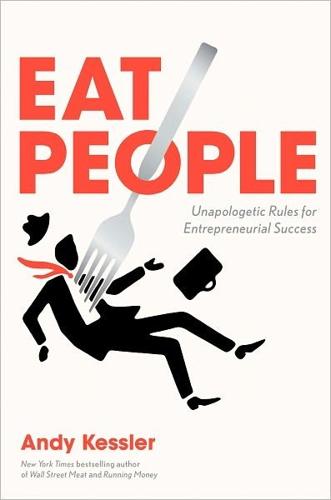
Eat People: And Other Unapologetic Rules for Game-Changing Entrepreneurs
by
Andy Kessler
Published 1 Feb 2011
Amazon uses a limited version of this in their recommendations, but more as a marketing tool to get you to buy yet another book. Others who view this item bought this book. We recommend that. They look for patterns and crudely overlay them on your page views in their system. Netflix, the DVD rental and streaming video company, offered a prize of $1 million for a better algorithm to suggest movies you might like to watch. These are all early adopters of the adaptive model. But why not recommend books based on my search history? If I’m searching on Google for information on the Ottoman Empire, surely there are a dozen books that ought to pop up that will be of interest immediately, without me heading to Amazon to find out.
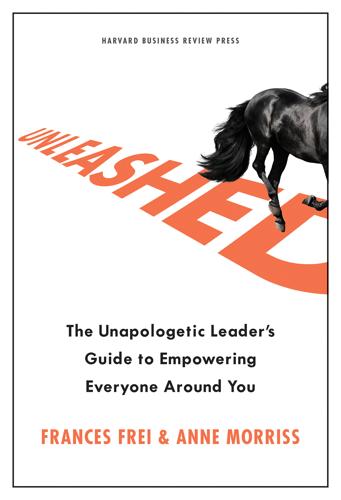
Unleashed
by
Anne Morriss
and
Frances Frei
Published 1 Jun 2020
If your ambition as a leader is maximum impact, then learn to become a culture warrior. Among the most effective culture warriors walking the planet is Patty McCord, former chief talent officer at Netflix. You won’t find empty values statements on the walls of a Netflix conference room, not on McCord’s watch. As she helped to build Netflix into a media giant, McCord articulated the behaviors the company prized most—there are nine—and then used them to drive all hiring, compensation, and exit decisions. She socialized new recruits on these behaviors in a famous hundred-slide presentation on Netflix’s unique culture, and then reinforced them constantly, for example, invoking “honesty” (number eight) if colleagues withheld feedback from each other.
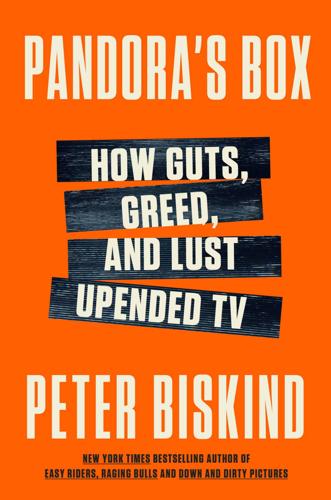
Pandora's Box: How Guts, Guile, and Greed Upended TV
by
Peter Biskind
Published 6 Nov 2023

Singularity Rising: Surviving and Thriving in a Smarter, Richer, and More Dangerous World
by
James D. Miller
Published 14 Jun 2012
The AI would obviously benefit from faster computers, but it could also improve its performance by using data from DNA sequencing and brain scans to conduct large statistical studies so as to better categorize people. For example, if 90 percent of people who had some unusual allele or brain microstructure enjoyed a certain cat video, then the AI recommender would suggest the video to all other viewers who had that trait. 12.Amenable to Crowdsourcing—Netflix, the rent-by-mail and streaming video distributor, offered (and eventually paid) a $1 million prize to whichever group improved its recommendation system the most, so long as at least one group improved the system by at least 10 percent. This “crowdsourcing,” which occurs when a problem is thrown open to anyone, helps a company by allowing them to draw on the talents of strangers, while only paying the strangers if they help the firm.
…
See also cognitive-enhancement drugs mental ability, general, 64 Methuselah Foundation, 170 Mexicans, millions of illegal, 135 microprocessors, 122 military spending, 180 military threats, 126–28 Milky Way galaxy, 45, 199 minority students, “acceptable” number of, 87 missile technology, 124 modafinil (cognitive-enhancement drug), 104 “modafinil squared” technology, 159 modern man, 77 “A Modest Proposal: Allow Women to Pay for College in Eggs” (Miller), 88 moons of Jupiter, 41 Moore, Gordon, xvi Moore’s Law, xivi 3–5, 8–9, 11, 17, 209 Muehlhauser, Luke, 7 multimillionaires, self-made, 209 murder, 39 musicians, 108 N nanobots, 10 nanosensors, 127 nanotechnology based weapons, 127 computing hardware, to improve, 8 to control our emotions and levels of happiness, 8 free energy from our galaxy stars and, 45 moons of Jupiter and, 41 office buildings, to construct large, 181 restorative, 213 virtual reality and, 171 nanotech weapons, 197 nanotubes, 4, 17 narcolepsy, 184 narcoleptics, 105 NASA, 217 National Center for Education Statistics (Washington, DC), 172 national defense, 180 National Football League (NFL), 90 natural disasters, 197 natural selection, 171 Nature, 109 Nazi Germany, 23 Netflix, 20 neuroscience, 185 neuroscientists, 13, 17, 203 Newton, Isaac, 91 New York Times, x NFL. See National Football League (NFL) Nobel science prizes, 96 nonparallel processing, 18 Normans in 1066, 187 North Korea, 187 Norvig, Peter, 35 nuclear war, xi, 197. See also thermonuclear war nuclear weapons, 24, 126 nutritional-supplement regime, 179 O Obama, Barack (President), 73 obsolescence, 144, 147 The Odyssey (Homer), 61 Omohundro, Steve, 25 Overcoming Bias (blog), 138, 207 P Pac-Man video game, 209 parallel processing, 18–19 Parkinson’s disease, 168–69 Pascal, Blaise, 208 patents and copyrights, 143 people, long term—oriented, 80 person, anonymous, 93 pharmaceutical product development, 183 phonetic pattern of language, 91 pirate maps, 184 placebo effect, 110–11 plagues, 36, 45, 78 plastic surgery, 89 Plath, Sylvia, 92 political correctness, 172 Polizzi, Eric, 5 population groups, 75–76, 96, 173 pornography, hard-core, 38, 195 pornography, Internet, 194 post-Singularity civilization, 199–200, 221 goods, 42 operating-system world, 41 pre-Singularity property will have value of, 188 pre-Singularity will be worthless, 187 property rights, 56, 188 race throughout the galaxy, 199 ultra-AI and chess, 132 value, 189 value of education, 192 value of money, 211 Praetorian Guard, 148 pre-Singularity destructive technologies, 201–2 investments, ultra-AI might obliterate the value of, 187 property rights, 56, 187–89 value of money, 211 prisoner-of-war camp, 31 Prisoners’ Dilemma AI development and, 47–53 annihilation of mankind, xix Chinese militaries and, 48–53 drug use and risk of schizophrenia or kidney failure, 160–62 unleaded vs. leaded petrol (gas), 57 US militaries and, 48–53 probe, self-replicating, 199–200 procrastination, 106 production wands, 145 pro-eugenic Chinese, ix prognosticators, 206–7 property owning, 147 property rights economic behavior and, xviii post-Singularity, 56 stable, 82 property rights, pre-Singularity, 187 property rights of bio-humans, 149 Psychology Today, 195 psychotic breakdowns, 120 Q quantum computing, 5, 17 quantum effects, 4 R rabbit population, 142 race, star-faring, 200 racial classifications, 76 racial equality, 173 rapture of the nerds, 208 Rattner, Justin, 35 real estate developer, 181–82 real estate development, 188 recessive condition, inherited, 83 Recursive Darkness (horse), 55, 57 Reed, Leonard, 204–5 religious disagreement, 43 reproductive fitness, 76 reproductive success, 75 resale value, 181 residential housing, 181 The Restaurant at the End of the Universe Adams), 150 retirement savings, 175–76 reverse-engineering biology, 203 reversible computing, 17 Ricardian comparative advantage, 136–37, 143, 188, 190 Ricardian scenario, 189 Ricardo, David, xvii, 135, 143 rich investors, 144–45 Ritalin (cognitive-enhancement drug), xiv, 104–5 Robin.

Dawn of the New Everything: Encounters With Reality and Virtual Reality
by
Jaron Lanier
Published 21 Nov 2017
Present-day Jaron must interject, from this doubly indented location,11 to defend his old self with more recent stories. It has happened! Now that computation runs our lives, we make ourselves dumb to make computers look smart all the time. Consider Netflix. The company claims that its smart algorithm gets to know you and then recommends movies. The company even offered a million-dollar prize for ideas to make the algorithm smarter. The thing about Netflix, though, is that it doesn’t offer a comprehensive catalog, especially of recent, hot releases. If you think of any particular movie, it might not be available for streaming.
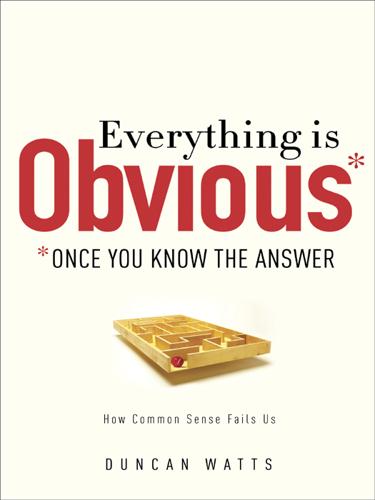
Everything Is Obvious: *Once You Know the Answer
by
Duncan J. Watts
Published 28 Mar 2011
The funding agency DARPA, for example, was able to harness the collective creativity of dozens of university research labs to build self-driving robot vehicles by offering just a few million dollars in prize money—far less than it would have cost to fund the same amount of work with conventional research grants. Likewise, the $10 million Ansari X Prize elicited more than $100 million worth of research and development in pursuit of building a reusable spacecraft. And the video rental company Netflix got some of the world’s most talented computer scientists to help it improve its movie recommendation algorithms for just a $1 million prize. Inspired by these examples—along with “open innovation” companies like Innocentive, which conducts hundreds of prize competitions in engineering, computer science, math, chemistry, life sciences, physical sciences, and business—governments are wondering if the same approach can be used to solve otherwise intractable policy problems.
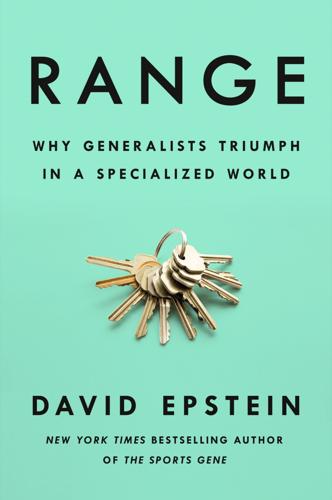
Range: Why Generalists Triumph in a Specialized World
by
David Epstein
Published 1 Mar 2019
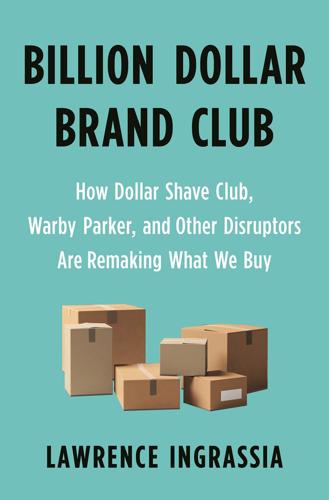
Billion Dollar Brand Club: How Dollar Shave Club, Warby Parker, and Other Disruptors Are Remaking What We Buy
by
Lawrence Ingrassia
Published 28 Jan 2020
And the computing power to run algorithms and make correlations has increased exponentially, too. Virtually every company, big and small, uses predictive analysis, from banks determining who qualifies for a credit card to online dating services divining which couples would be good matches. Netflix put predictive analytics in the spotlight in 2006 by announcing a competition, with a $1 million grand prize, for creating the best algorithm that would improve its in-house user movie recommendations. Three years later, a team won by writing an algorithm that was 10 percent better at predicting which movies Netflix viewers would like, which resulted in higher customer retention rates.
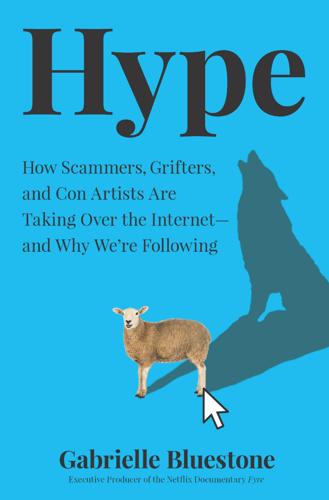
Hype: How Scammers, Grifters, and Con Artists Are Taking Over the Internet―and Why We're Following
by
Gabrielle Bluestone
Published 5 Apr 2021
—Olivia Nuzzi, author and Washington correspondent, New York magazine Gabrielle Bluestone is a journalist and licensed attorney from New York, whose writing has appeared in the New York Times, Washington Post, New York Observer, Sunday Times Magazine, Esquire, InStyle and Gawker. She is the Emmy-nominated producer of Netflix’s Fyre and the associate producer of Different Flowers, winner of the 2017 Kansas City FilmFest Festival Prize. Twitter: @G_Bluestone Instagram: @GBluestone Website: www.GabrielleBluest.one/ Hype How Scammers, Grifters, and Con Artists Are Taking Over the Internet—and Why We’re Following Gabrielle Bluestone For my parents, Janet and Andrew Bluestone, who were right about (almost) everything.

The Equality Machine: Harnessing Digital Technology for a Brighter, More Inclusive Future
by
Orly Lobel
Published 17 Oct 2022
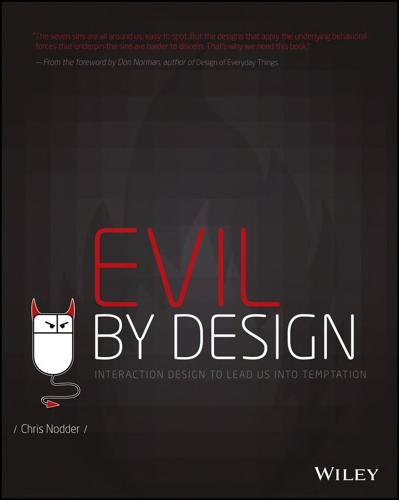
Evil by Design: Interaction Design to Lead Us Into Temptation
by
Chris Nodder
Published 4 Jun 2013

Average Is Over: Powering America Beyond the Age of the Great Stagnation
by
Tyler Cowen
Published 11 Sep 2013
See also artificial intelligence (AI) Mechanical Turk, 148–49 mechanization, 126–27 media, 146 median incomes, 38, 52, 60, 253 Medicaid, 234–39, 250 medical diagnosis, 87–89, 128–29 Medicare, 232–35, 237–38, 242 Medication Adherence Scores, 124 Mediterranean Europe, 174–75 memory, 151–55 meritocracy, 189–90, 230–31 meta-rationality, 82, 115 meta-studies, 224–25 Mexico, 168, 171, 177, 242–43 microcredit, 222–23 microeconomics, 212, 225 “micro-intelligibility,” 219 mid-wage occupations, 38 military, 29, 57 Millennium Prize Problems, 207–8 minimum wage, 59, 60 modes of employment, 35–36 monetarist theory, 226 MOOCs (massive open online courses), 180 Moonwalking with Einstein (Foer), 152 Moore’s law, 10, 15–16 moral issues, 26, 130–31 morale in the workplace, 30, 36 Mormon Church, 197 Morphy, Paul, 106 motivation, 197–202, 203 movie ratings, 121 Moxon’s Master, 134 Mueller, Andreas, 59 multinational corporations, 164 Murray, Charles, 231, 249 music, 146–47, 158 Myspace, 42, 209 mysticism, 153 Nakamura, Hikaru, 80 Narrative Science, 8–9 natural gas production, 177 natural language, 7, 119, 140–41 Naum (chess program), 72 negotiations in business, 12–13, 73 Netflix, 9 Nevada, 8 The New York Times, 11–12 Newton, Isaac, 153 Ng, Jennifer Hwee Kwoon, 89 Nickel, Arno, 81 Nielsen, Dagh, 80 Nobel Prizes, 187, 216 non-tradeable sectors, 176 North American Free Trade Agreement (NAFTA), 8 Northeast US, 241 “nudge” concept, 105 Obama healthcare reform, 237–38 Occupy Wall Street, 230, 251, 253, 256 O’Daniel, Karrah, 96 offshoring, 175.

Randomistas: How Radical Researchers Changed Our World
by
Andrew Leigh
Published 14 Sep 2018
McKinsey 139 medical drug trials 26–31, 199–201 and clinical trials 28 see also ‘placebo effect’; streptomycin trial medical randomised trials 3–6, 24–34, 183–4, 190, 201–2 and Archie Cochrane 27–8, 190 and control groups 13, 24 ‘double-blind’ studies 26 and ethics 13, 21, 31, 56, 182, 184 and evidence-based medicine 26–7 and exercise science 33, 201–2 and Head Injury Retrieval Trial 183–4 and Iain Chalmers 28 and James Lind 3–6, 16, 23 and scurvy treatment trials 3–5, 16 ‘single subject’ trials 168 and single-centre trials 197 and vaccinations 113 see also scurvy treatment trials meta-analysis 85 Miami Herald 60 microcredit 5, 6, 105–6, 121, 123 microtargeting 141 Minchin, Tim, and ‘Storm’ 32–3 Minneapolis Domestic Violence Experiment 90–1 see also Lawrence Sherman ‘modern synthesis’ 53 see also Ronald Fisher Moore, Evelyn 67 Morris, Nigel 128–9 motivation 107–8 ‘Moving to Opportunity’ program 39–40 Moynihan, Senator Daniel Patrick 206 Mullainathan, Sendhil 109, 209 Muralidharan, Karthik 110–11, 123–4 Murphy, Patrick 89 see also US Police Foundation Mycoskie, Blake 113 National Association for Music Education 76 National Council for Evaluation of Social Development 210 natural field experiments 176 neighbourhood project 38–40 see also Maricela Quintanar Neighbourhood Watch 94, 98, 183 Netflix 7, 143 Netscape 6 see also Jim Barksdale Newton, Isaac 203 ‘Nimechill’ 120 see also sex education No Child Left Behind Act 210 Nobel Peace Prize 105 see also Muhammad Yunus N-of-1 168–9 Nosek, Brian, and replication of psychology studies 196 Nudge Unit 170–1, 206 see also David Halpern Obama, President Barack 146–8, 159, 169 observational analysis 11 OkCupid, and the dating website trial 129–30 Okonjo-Iweala, Ngozi 102 ee also YouWiN!

The Future Is Asian
by
Parag Khanna
Published 5 Feb 2019
., 49, 265, 316 Ganges region, 29, 32 Ganges River, 33, 35, 46 “Gangnam Style” (music video), 343 Gates, Bill, 317 Geely, 194 General Electric, 110, 168, 211 Genghis Khan, 39–40 Georgia, Republic of, 59 technocracy in, 307 Germany, Nazi, 50 Germany, unified: Arab refugees in, 255 Asian immigrants in, 253, 254, 256 Asia’s relations with, 242 multiparty consensus in, 284 Ginsberg, Allen, 331 Giving Pledge, 317 Global-is-Asian, 22 globalization: Asia and, 8–9, 162, 357–59; see also Asianization growth of, 14 global order, see world order Goa, 44, 89, 186 Göbekli Tepe, 28 Goguryeo Kingdom, 34 Go-Jek, 187 Golden Triangle, 123 Google, 199, 200, 208–9, 219 Gorbachev, Mikhail, 58 governance: digital technology in, 318–19 inclusive policies in, 303 governance, global: Asia and, 321–25 infrastructure and, 322 US and, 321 government: effectiveness of, 303 trust in, 291, 310 violence against minorities by, 308–9 Government Accountability Office (GAO), 293 GrabShare, 174–75 grain imports, Asian, 90 Grand Canal, China, 37, 42 Grand Trunk Road, 33 Great Britain: Asian investments in, 247 Brexit vote in, 283–84, 286, 293–94 civil service in, 293–94 colonial empire of, 46–47 industrialization in, 46 Iran and, 252 populism in, 283–84 South Asian immigrants in, 253, 254 West Asian mandates of, 49–50 Great Game, 47 Great Leap Forward, 55 Great Wall of China, 31 Greece, 60, 91, 248 Greeks, ancient, 29, 34 greenhouse gas emissions, 176–77, 182 gross domestic product (GDP), 2, 4, 150 Grupo Bimbo, 272 Guam, 50, 136 Guangdong, 42, 98 Guangzhou (Canton), 37, 48, 68 Gulf Cooperation Council (GCC), 58, 101, 102 Gulf states (Khaleej), 6, 9, 57, 62, 81 alternative energy projects in, 251 Asianization of, 100–106 China and, 101, 102 European investment in, 251 India and, 102 Israel and, 99–100, 105 Japan and, 102 oil and gas exports of, 62, 74, 100–101, 176 South Asian migrants in, 334 Southeast Asia’s trade with, 102 South Korea and, 102 technocracy in, 311–12 US arms sales to, 101 women in, 315 see also specific countries Gulliver, Stuart, 148, 150 Gupta Empire, 35 H-1B visas, 219 Hamas, 59, 100, 139 Hamid, Mohsin, 184 Han Dynasty, 32, 33, 34, 300 Hanoi, 180 Han people, 31–32, 37, 69 Harappa, 29 Hardy, Alfredo Toro, 275 Hariri, Saad, 95 Harun al-Rashid, Caliph, 37 Harvard University, 230 Haushofer, Karl, 1 health care, 201–2 Helmand River, 107 Herberg-Rothe, Andreas, 75 Herodotus, 30 heroin, 106–7 Hezbollah, 58, 95, 96, 106 Hindus, Hinduism, 29, 31, 32, 34, 38, 70–71 in Southeast Asia, 121 in US, 220, 221 Hiroshima, atomic bombing of, 51 Hispanic Americans, 217 history, Asian view of, 75 history textbooks: Asia nationalism in, 27–28 global processes downplayed in, 28 Western focus of, 27–28, 67–68 Hitler, Adolf, 50 Ho, Peter, 289 Ho Chi Minh, 52 Ho Chi Minh City, 56 Honda, 275 Hong Kong, 56, 74 American expats in, 234 art scene in, 342 British handover of, 60, 141 civil society in, 313 Hongwu, Ming emperor, 42 honor killings, 315 Hormuz, Strait of, 103, 106 hospitality industry, 190, 214 Houthis, 106, 107 Huan, Han emperor, 33–34 Hulagu Khan, 40 Human Rights Watch, 313 human trafficking, 318 Hunayn ibn Ishaq, 37 Hungary, 40, 248, 256 Huns, 35, 76 hunter-gatherers, 28 Huntington, Samuel, 15 Hu Shih, 332 Hussein, Saddam, 58, 62, 101 Hyundai, 104 IBM, 212 I Ching, 30 Inclusive Development Index (IDI), 150 income inequality: in Asia, 183–84 in US, 228, 285 India, 101, 104 Afghanistan and, 118 Africa and, 264–66 AI research in, 200 alternative energy programs in, 178–79, 322 Asian investments of, 118 Australia and, 128 British Raj in, 46, 49 charitable giving in, 316–17 China and, 19–20, 113, 117–18, 155, 156, 332 civil society in, 313 in Cold War era, 52, 55, 56 corporate debt in, 170 corruption in, 161, 305 demonetization in, 184, 186–87 diaspora of, 333–34 early history of, 29, 30–31 economic growth of, 9, 17, 148, 185–86 elections in, 63 European trade partnerships with, 250–51 expansionist period in, 38, 41–42 failure of democracy in, 302 family-owned businesses in, 160 film industry in, 349–51 financial markets in, 186 foreign investment in, 192 gender imbalance in, 315 global governance in, 322–23 global image of, 331–32 Gulf states and, 102 inclusive policies in, 304 infrastructure investment in, 63, 110, 185 Iran and, 116, 118 Israel and, 98–99 IT industry in, 204, 275 Japan and, 134, 156 Latin America and, 275 manufacturing in, 192 as market for Western products and services, 207 naval forces of, 105 Northeast Asia and, 154–55 oil and gas imports of, 96, 107–8, 176 Pakistan and, 53, 55, 61, 77–78, 117–18 partitioning of, 52–53 pharmaceutical industry in, 228, 275 population of, 15, 186 in post–Cold War era, 61, 62 privatization in, 170 returnees in, 226 Russia and, 86–87 service industry in, 192 Southeast Asia and, 154–55 special economic zones in, 185 spiritual heritage of, 332 technocracy in, 304–6 technological innovation in, 186–87 territorial claims of, 11 top-down economic reform in, 305 traditional medicine of, 355 West Asia and, 155 Indian Americans, 217, 218, 219–20, 222 Indian Institutes of Technology (ITT), 205 Indian Ocean, 38, 47, 74, 105, 261, 262, 266 European voyages to, 44 Indians, in Latin America, 276 IndiaStack, 187 Indochina, 45, 50, 52 see also Southeast Asia Indo-Islamic culture, 38 Indonesia, 53, 61, 121, 125, 182 art scene in, 342 in Cold War era, 54 economic growth of, 17, 148 eco-tourism in, 340 failure of democracy in, 302 foreign investment in, 187 illiberal policies of, 306 inclusive policies of, 304 Muslims in, 71 technocracy in, 304–5 Indus River, 32, 113 Industrial and Commercial Bank of China (ICBC), 92, 159 industrialization, spread of, 22 Industrial Revolution, 2, 46, 68 Indus Valley, 29 infrastructure investment, in Asia, 6, 62, 63, 85, 88, 93, 96, 104, 108, 109, 110–11, 185, 190, 191, 243–44 see also; Asian Infrastructure Investment Bank; Belt and Road Initiative Institut d’Études Politiques de Paris (Sciences Po), 257, 286–87 insurance industry, 210 intermarriage, 336, 337–38 International Monetary Fund (IMF), 162, 163, 166, 323 International North-South Transport Corridor (INSTC), 116 International Renewable Energy Agency (IRENA), 100 International Systems in World History (Buzan), 7 Internet of Things (IoT), 134, 136, 197 Interpol, 324 Iran, 11, 15, 62, 92, 95, 98, 101, 140 China and, 101, 106–7, 116 in Cold War era, 54 European trade with, 251–52 growing opposition to theocracy in, 312 India and, 116, 118 Islamic revolution in, 57 Israel and, 99, 100 nuclear program of, 62 oil and gas exports of, 50, 94, 106, 107–8, 118, 176 in post–Cold War era, 58–59 privatization in, 170 re-Asianization of, 81, 106 Russia and, 87 Saudi Arabia and, 95–96, 100, 105–6 Syria and, 106 tourism in, 252 Turkey and, 94 US sanctions on, 87, 107, 241, 251, 252 women in, 315 Yemen and, 107 Iran-Iraq War, 58, 106 Iraq, 9, 11, 16, 49 Kuwait invaded by, 59 oil exports of, 55, 96 Sunni-Shi’a conflict in, 312 Iraq Reconstruction Conference (2018), 96 Iraq War, 3, 62, 91, 217, 240 Isfahan, 41 Islam, 40, 316 politics and, 71–72 spread of, 36, 38–39, 43, 69–72, 74 Sunni-Shi’a conflict in, 95, 312 Sunni-Shi’a division in, 36 see also Muslims; specific countries Islamic radicalism, 58, 59, 62, 65, 68, 71, 72, 115, 117, 139 see also terrorism Islamic State in Iraq and Syria (ISIS), 63, 71, 94, 96, 117 Israel, 11, 54, 96 arms sales of, 98 China and, 98–99 desalinzation technology of, 181 EU and, 97 Gulf states and, 99–100, 105 India and, 98–99 Iran and, 99, 100 Russia and, 88 see also Arab-Israeli conflict; Palestinian-Israeli conflict Japan, 14, 16, 63, 68, 69, 73 Africa and, 265 Allied occupation in, 51 alternative energy technologies in, 322 Asian investments of, 118, 156 Asianization of, 81 Asian migrants in, 336–37 Asian trade with, 273 capitalism in, 159 cashless economy in, 189 China and, 19–20, 77, 134, 136–37, 140–42 in Cold War era, 5, 55 corporate culture of, 132 early history of, 29, 31, 34–35 economic growth of, 55, 132, 148, 158, 163 economic problems of, 132, 134–35 in era of European imperialism, 47–48 EU trade agreement with, 133 expansionist period in, 38, 42, 44 foreign investment in, 135 in global economy, 133–37 global governance and, 322–23 global image of, 331 Gulf states and, 102 immigration in, 135–36 India and, 134, 156 infrastructure investment in, 110 Latin America and, 275 precision industries in, 134, 135–36 robotic technology in, 134 Russia and, 82, 86–87 Southeast Asia and, 133, 153–54, 156 South Korea and, 141–42 technological innovation in, 134, 196, 197 territorial claims of, 11 tourism in, 135 US and, 136 in World War I, 49 in World War II, 50–51 Japan International Cooperation Agency (JICA), 265 Japan-Mexico Economic Partnership Agreement, 273 Java, 35, 38, 39, 45 Javid, Sajid, 254 Jericho, 28 Jerusalem, 54, 98 Jesus Christ, 35 jihad, 38 Jinnah, Muhammad Ali, 52 Jobs, Steve, 331 Joko Widodo (Jokowi), 305, 306, 320 Jollibee, 172 Jordan, 54, 62, 97, 99 Syrian refugees in, 63 Journal of Asian Studies, 352 Journey to the West, 353 Judaism, 36 Kagame, Paul, 268 Kanishka, Kush emperor, 35 Kapur, Devesh, 218 Karachi, 113 Karakoram Highway, 113 Kashmir, 53, 55, 61, 77–78, 117–18, 119 Kazakhstan, 59, 140, 207 China and, 20, 108 economic diversification in, 190 energy investment in, 112 as hub of new Silk Road, 111–12 Kenya, 262, 263 Kerouac, Jack, 331 Khaleej, see Gulf states Khmer Empire, 70 Khmer people, 34, 38, 239 Khmer Rouge, 56 Khomeini, Ayatollah, 57, 59 Khorgas, 108 Khrushchev, Nikita, 56 Khwarizmi, Muhammad al-, 37 Kiev, 40 Kim Il Sung, 55 Kim Jong-un, 142 Kish, 28 Kissinger, Henry, 357 Koran, 316 Korea, 11, 31, 51, 68, 69 early history of, 34 expansionist period in, 38 Japanese annexation of, 48 reunification of, 142–43 see also North Korea; South Korea Korea Investment Corporation, 164 Korean Americans, 217 Korean War, 51 Kosygin, Alexei, 56 K-pop, 343 Kuala Lampur, 121, 246 Kublai Khan, 40 Kurds, Kurdistan, 87, 94, 99, 256 Kushan Empire, 32, 35 Kuwait, 101 Iraqi invasion of, 59 Kyrgyzstan, 59, 108, 182 language, Asian links in, 68–69 Laos, 45, 52, 60, 122, 154 Latin America: Asian immigrants in, 275–76 Asian investment in, 273–75, 276–77 Indian cultural exports to, 350 trade partnerships in, 272–73, 274, 275 US and, 271–72 Lebanon, 49, 54, 58, 95, 106 Syrian refugees in, 63 Lee, Ang, 347 Lee, Calvin Cheng Ern, 131 Lee Hsien Loong, 296–97 Lee Kuan Yew, 56, 127, 268, 288, 289, 292–93, 299, 305 voluntary retirement of, 296 Lee Kuan Yew School of Public Policy, 22, 299 Lenin, Vladimir, 49, 89 Levant (Mashriq), 81, 95, 97 LG, 275 Li & Fung, 184–85 Liang Qichao, 48–49 Liberalism Discovered (Chua), 297 Lien, Laurence, 317 life expectancies, 201 literature, Asian, global acclaim for, 353–54 Liu, Jean, 175 Liu Xiaobo, 249 logistics industry, 243 Ma, Jack, 85–86, 160, 189 Macao (Macau), 44 MacArthur, Douglas, 51 McCain, John, 285 McKinsey & Company, 160, 213 Macquarie Group, 131 Maddison, Angus, 2 Made in Africa Initiative, 262 Magadha Kingdom, 31 Magellan, Ferdinand, 43 Mahabharata, 35 Mahbubani, Kishore, 3 Mahmud of Ghazni, Abbasid sultan, 38 Malacca, 38, 43, 44, 124 Malacca, Strait of, 37, 39, 102, 103, 118, 125 Malaya, 46, 50 Malay Peninsula, 39, 53 Malaysia, 53, 61, 188 Asian foreign labor in, 335 China and, 123, 124 in Cold War era, 54 economic diversification in, 190 economic growth of, 17 technocracy in, 308 Maldives, 105 Malesky, Edmund, 308 Manchuria, 38, 48, 50, 51 Mandarin language, 229–30, 257 Manila, 121, 245 Spanish colonization of, 44 Mansur, al-, Caliph, 37 manufacturing, in Asia, 192 Mao Zedong, 51–52, 55, 56, 261, 300, 301 Marawi, 71 Marcos, Ferdinand, 53–54, 61 martial arts, mixed (MMA), 340–41 Mashriq (Levant), 81, 95, 97 Mauritius, 268 Mauryan Empire, 32–33, 68 May, Theresa, 293 Mecca, 57 media, in Asia, 314 median ages, in Asia, 148, 149, 155 Median people, 29 Mediterranean region, 1, 6, 29, 30, 33, 68, 84, 92, 95, 99, 106 see also Mashriq Mehta, Zubin, 332 Mekong River, 122 Menander, Indo-Greek king, 33 mergers and acquisitions, 212–13 meritocracy, 294, 301 Merkel, Angela, 242, 254 Mesopotamia, 28 Mexico, 7 Asian economic ties to, 272, 273, 274, 277 Microsoft, 208 middle class, Asian, growth of, 3, 4 Mihov, Ilian, 309 mindfulness, 332 Ming Dynasty, 42–43, 44, 69, 73, 75, 76, 105, 137, 262 mobile phones, 157, 183–84, 187, 188, 189, 193, 199, 208–9, 211 Modi, Narendra, 63, 98, 117, 119, 154–55, 161, 180, 185, 222, 265, 305, 306, 307, 320 Mohammad Reza Pahlavi, Shah of Iran, 54 Mohammed bin Salman, crown prince of Saudi Arabia, 72, 247, 310, 312, 315 Mohenjo-Daro, 29 Moluku, 45 MoneyGram, 196 Mongolia, 92, 111–12 alternative energy programs in, 112, 182 technocracy in, 307 Mongols, Mongol Empire, 39–40, 42, 44, 68, 69, 73, 76, 77, 239 religious and cultural inclusiveness of, 40, 70–71 Monroe Doctrine, 271 Moon Jae-in, 142 Moscow, 81, 82 Mossadegh, Mohammad, 54 MSCI World Index, 166, 168 Mubadala Investment Company, 88, 103, 104 Mughal Empire, 41–42, 46 religious tolerance in, 70–71 Muhammad, Prophet, 36 Mumbai, 185–86 Munich Security Conference, 241 Murakami, Haruki, 354 Murasaki Shikibu, 353 music scene, in Asia, 343 Muslim Brotherhood, 59 Muslims, 70–72 in Southeast Asia, 38–39, 43, 70–71, 121 in US, 220 see also Islam; specific countries Myanmar, 60, 63, 161 Asian investment in, 118–19 charitable giving in, 316 failure of democracy in, 302 financial reform in, 184 Rohingya genocide in, 122–23 see also Burma Nagasaki, atomic bombing of, 51 Nanjing, 42, 49 Napoleon I, emperor of the French, 1 nationalism, 11, 20, 22, 49–50, 52–55, 77, 118, 137, 138–39, 222, 312, 329, 337, 352 Natufian people, 28 natural gas, see oil and gas natural gas production, 175–76 Nazism, 200 Nehru, Jawaharlal, 52, 55 Neolithic Revolution, 28 neomercantilism, 20, 22, 158 Nepal, 46, 119–20, 333 Nestorian Christianity, 36, 70 Netanyahu, Benjamin, 97, 98, 100 Netflix, 348 New Deal, 287 New Delhi, 245 Ng, Andrew, 199 NGOs, 313 Nigeria, 265 Nisbett, Richard, 357 Nixon, Richard, 56, 101 Nobel Prize, 48, 221, 249, 323, 353–54 nomadic cultures, 76 Non-Aligned Movement, 55 Non-Proliferation of Nuclear Weapons Treaty, 61 North America: Asian trade with, 13, 14, 207 as coherent regional system, 7 energy self-sufficiency of, 175, 272 internal trade in, 152 see also Canada; Mexico; United States North American Free Trade Agreement (NAFTA), 7 North Atlantic Treaty Organization (NATO), 2, 57, 92, 116 Northeast Asia, 141 India and, 154–55 internal trade in, 152 manufacturing in, 153 North Korea, 55, 61 aggressiveness of, 63 China and, 143 cyber surveillance by, 142 nuclear and chemical weapons program of, 142 Russia and, 143 South Korea and, 142 US and, 142–43 Obama, Barack, 18, 82, 229, 240 oil and gas: Asian imports of, 9, 62, 82–83, 84–85, 96, 102, 106, 107–8, 152, 175, 176, 207 Gulf states’ exports of, 62, 74, 100–103, 176 Iranian exports of, 50, 94, 106, 107–8, 118, 176 Iraqi exports of, 55, 96 OPEC embargo on, 57 price of, 61 Russian exports of, 82–83, 84, 87–88, 175, 176 Saudi exports of, 58, 87–88, 102, 103 US exports of, 16, 207 West Asian exports of, 9, 23, 57, 62, 152 Okakura Tenshin, 48 oligarchies, 294–95 Olympic Games, 245 Oman, East Asia and, 104 ONE Championship (MMA series), 341 OPEC (Organization of Petroleum Exporting Countries), 57 Operation Mekong (film), 123 opium, 47, 123 Organization for Security and Co-operation in Europe (OSCE), 241 Oslo Accords, 59 Osman I, Ottoman Sultan, 41 Ottoman Empire, 40–41, 43, 45, 46–47, 48, 73, 91 partitioning of, 49–50 religious tolerance in, 70–71 Out of Eden Walk, 4 Overseas Private Investment Company (OPEC), 111 Pacific Alliance, 272 Pacific Islands, 181–82 US territories in, 48 Pacific Rim, see East Asia Pakistan, 52–53, 58, 62, 72, 95, 102, 105 AI research in, 200 Asianization of, 81, 113–18 as Central Asia’s conduit to Arabian Sea, 113–14 China and, 20, 114–16, 117–18 corruption in, 161 failure of democracy in, 302 finance industry in, 168–69 foreign investment in, 115 GDP per capita in, 184 India and, 55, 61–62, 117–18 intra-Asian migration from, 334 logistics industry in, 185 as market for Western products and services, 207 US and, 114–15 Pakistan Tehreek-e-Insaf (PTI), 307 Palestine, Palestinians, 49, 54, 99 Palestine Liberation Organization (PLO), 59 Palestinian-Israeli conflict, 59, 62, 97, 100 Pan-Asianism, 48, 351–52 paper, invention of, 72 Paris climate agreement, 178, 240 Paris Peace Conference (1918), 49 Park Chung-hee, 56 Park Geun-hye, 313 parliamentary democracy, 295 Parthians, 33, 76 Pawar, Rajendra, 205 Pearl Harbor, Japanese attack on, 50 peer-to-peer (P2P) lending, 169 People’s Action Party (PAP), Singapore, 294 People’s Bank of China (PBOC), 110, 188 Pepper (robot), 134 per capita income, 5, 150, 183, 186 Persia, Persian Empire, 29, 30, 42, 45, 47, 50, 68, 75 see also Iran Persian Gulf War, 61, 101, 217 Peru: Asian immigrants in, 275, 276 Asian trade with, 272 Peshawar, 32 Peter I, Tsar of Russia, 45, 90 pharmaceutical companies, 209–10 Philippines, 61, 157, 165 alternative energy programs in, 180 Asian migrants in, 333 China and, 123–24 Christianity in, 74 in Cold War era, 53–54 eco-tourism in, 340 foreign investment in, 124 illiberal policies of, 306 inclusive policies in, 304 as market for Western products and services, 207 Muslims in, 71 privatization in, 170 technocracy in, 304–5 urban development in, 190 US acquisition of, 48 US and, 123–24 philosophy, Asian vs.
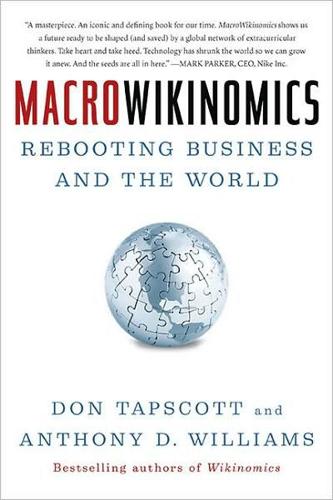
MacroWikinomics: Rebooting Business and the World
by
Don Tapscott
and
Anthony D. Williams
Published 28 Sep 2010
Today, the X Prize Foundation is just one of many organizations that have latched on to incentivized challenges as a way to unleash fundamental breakthroughs in society. Richard Branson, the founder of Virgin, will part with $25 million of his own money in exchange for a commercially feasible way to remove greenhouse gases from Earth’s atmosphere. Netflix has issued a global challenge to anyone who can improve the company’s automated movie recommendations algorithm, while Google’s Lunar X Prize will go to the first private venture to send image-transmitting rovers to the moon. Why do these competitions work? “We are genetically bred to compete,” Diamandis explains. “It’s when we do our best business many times, we do our best sports, and I believe competition extracts the best out of individuals.”